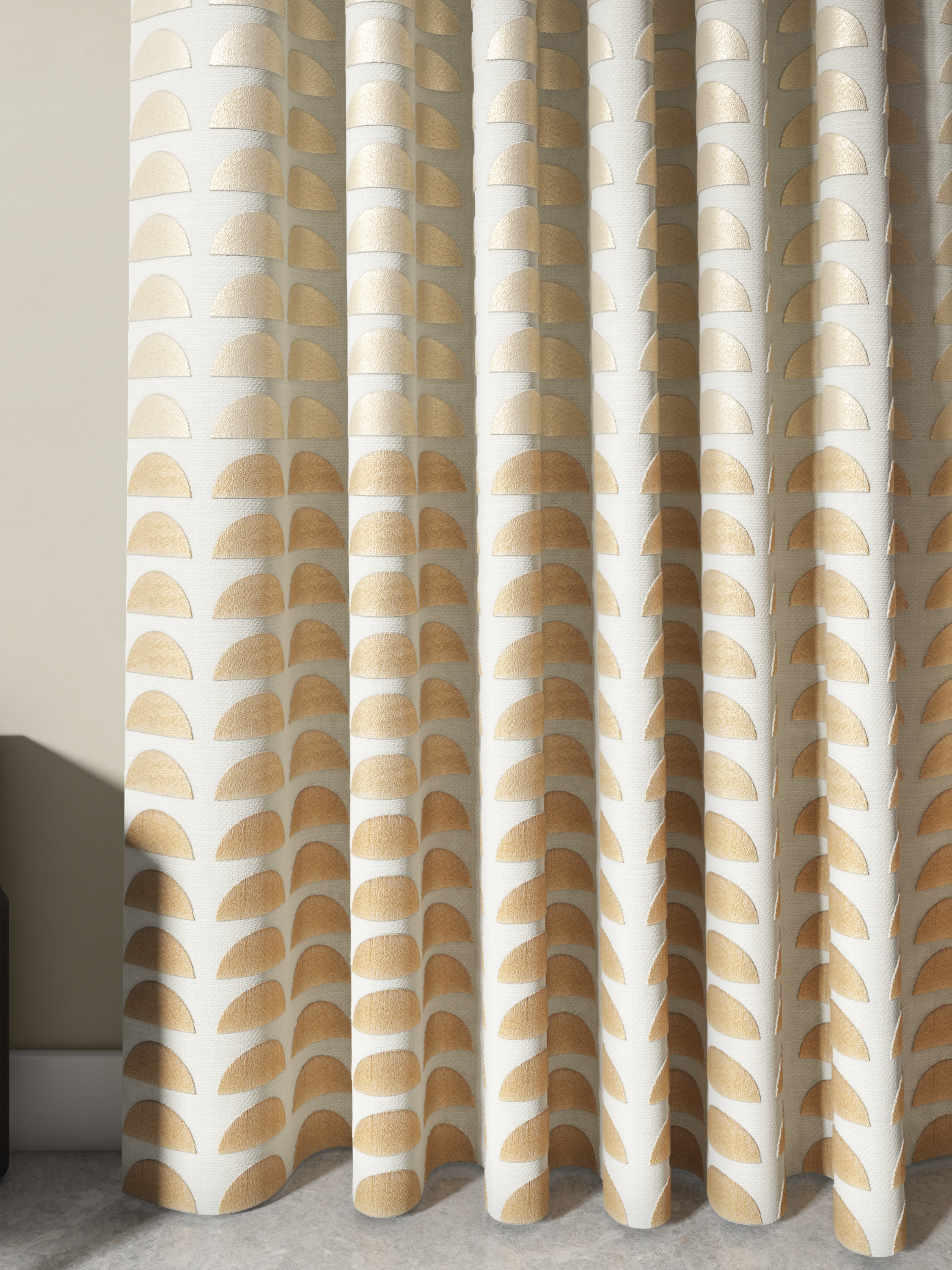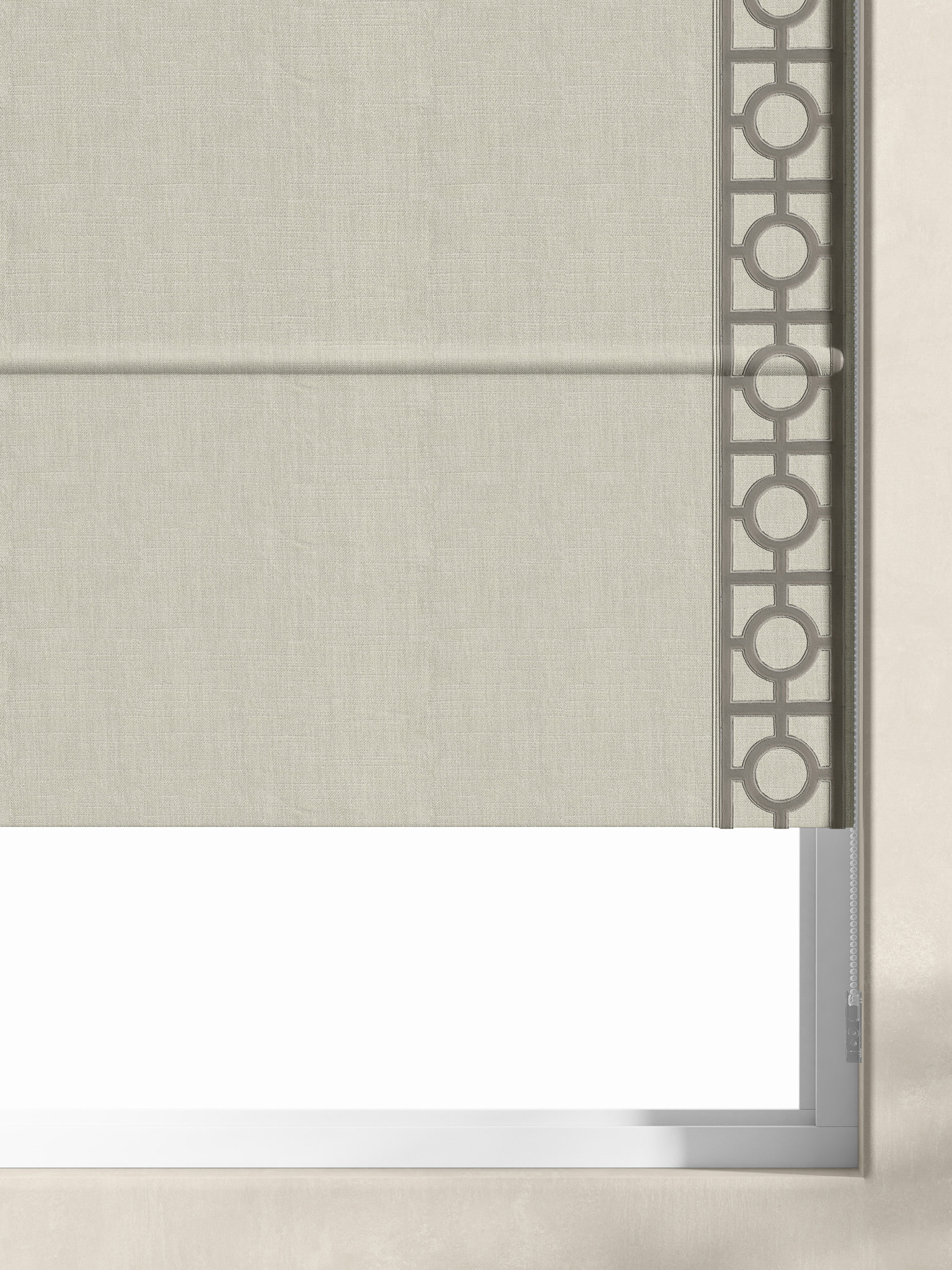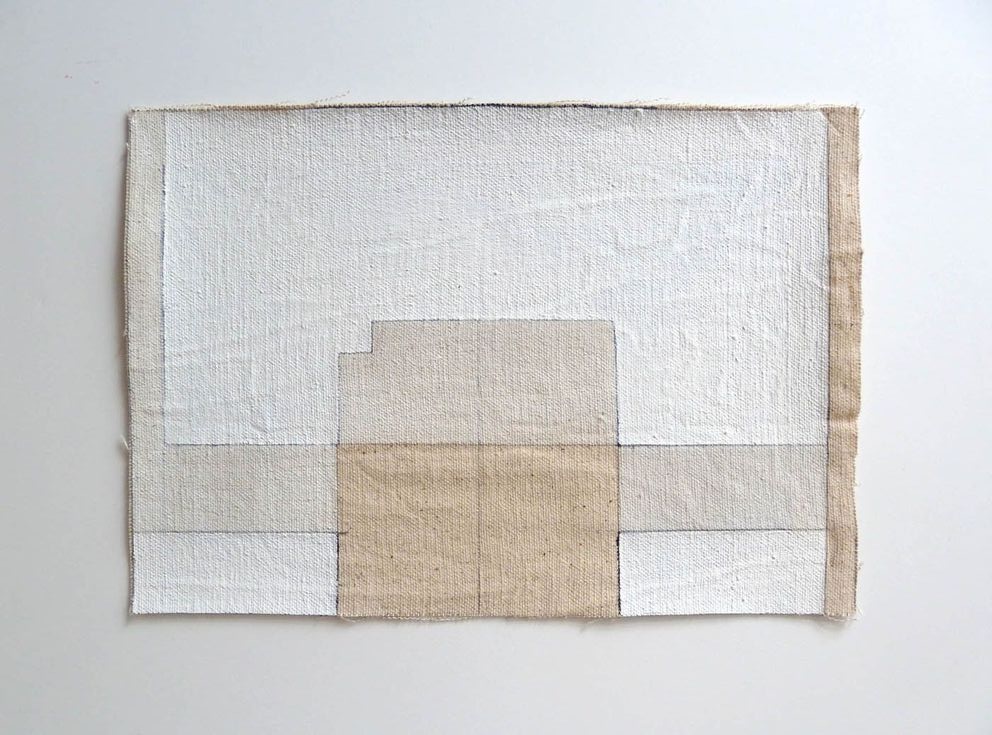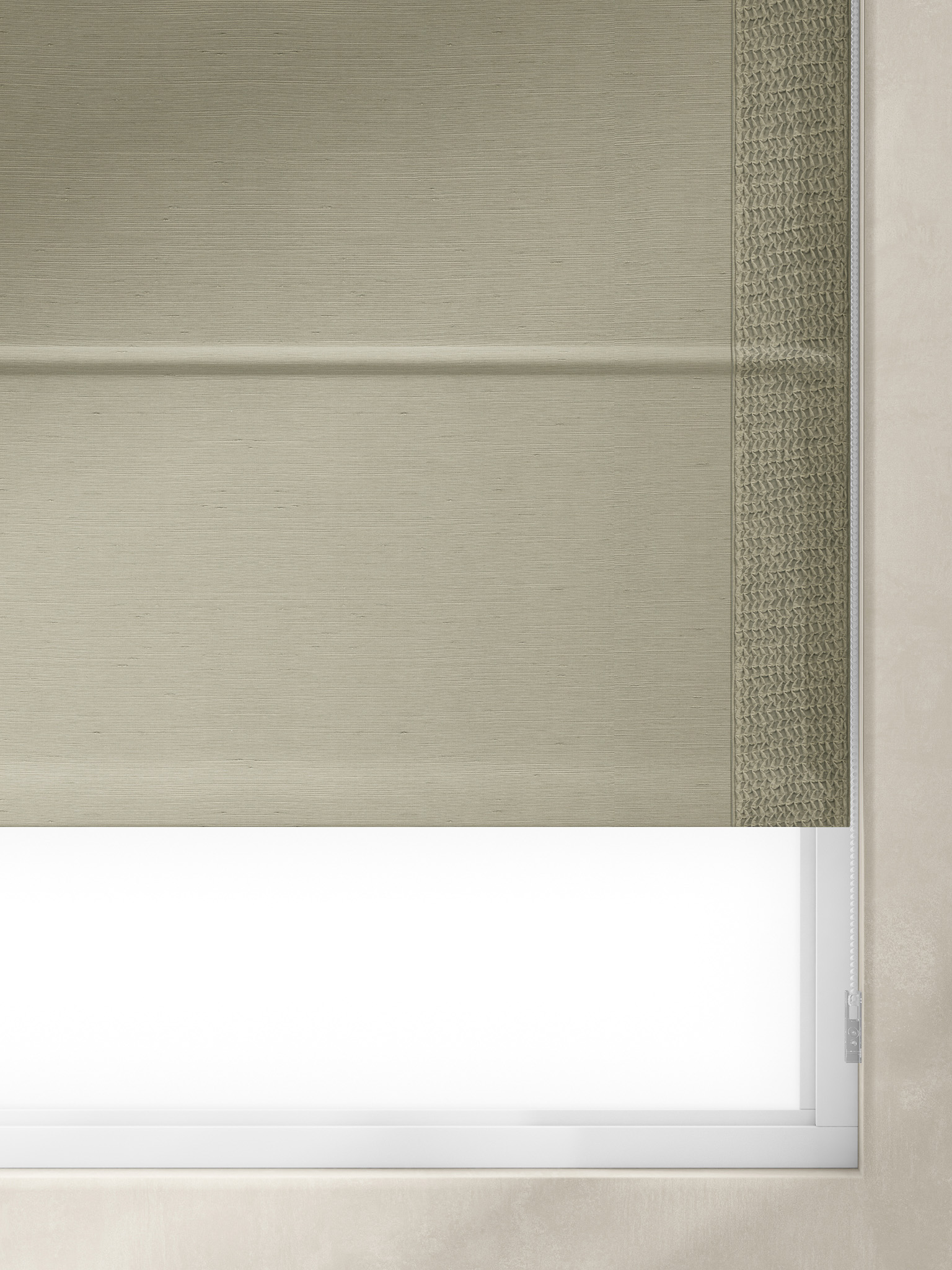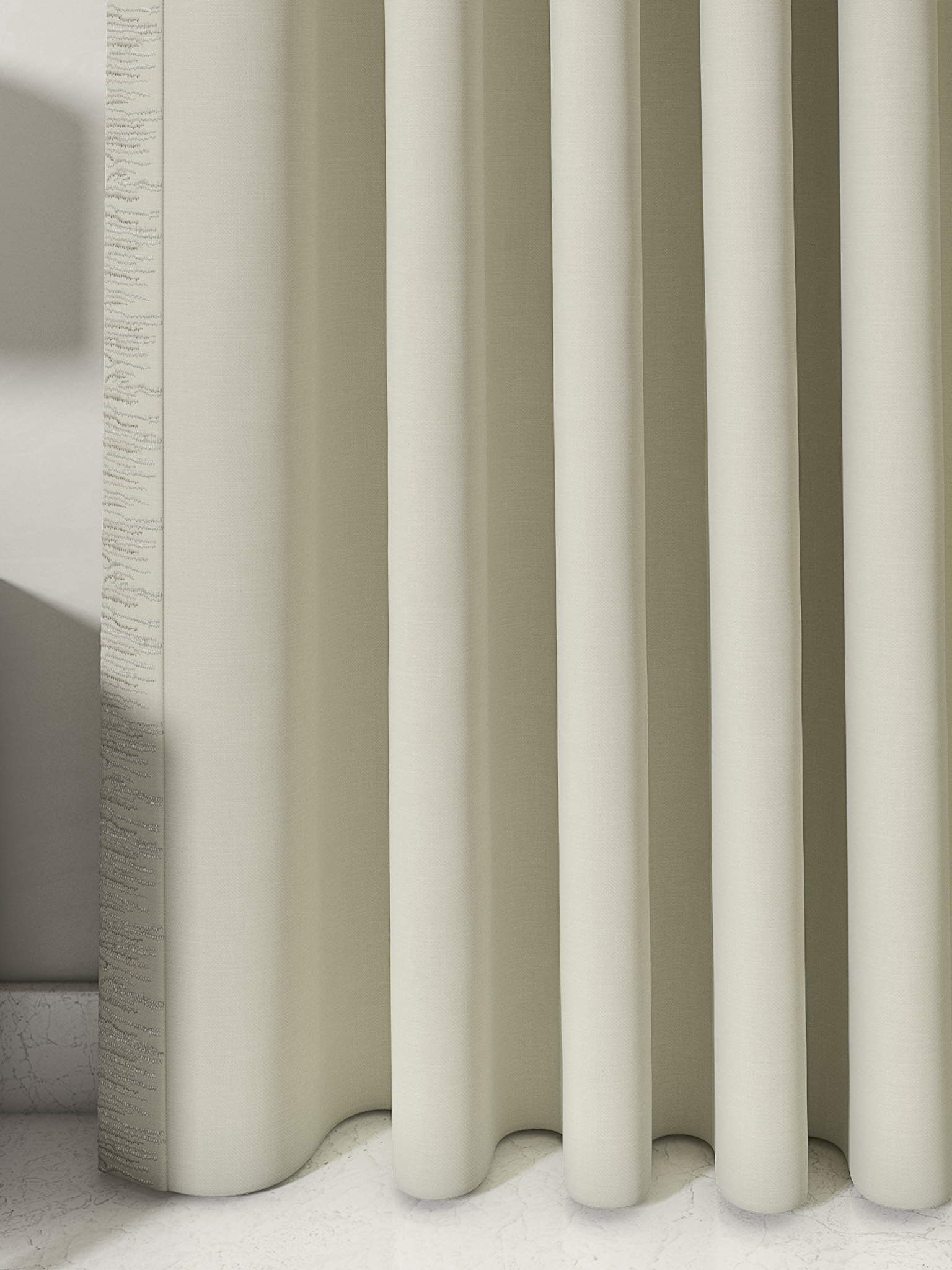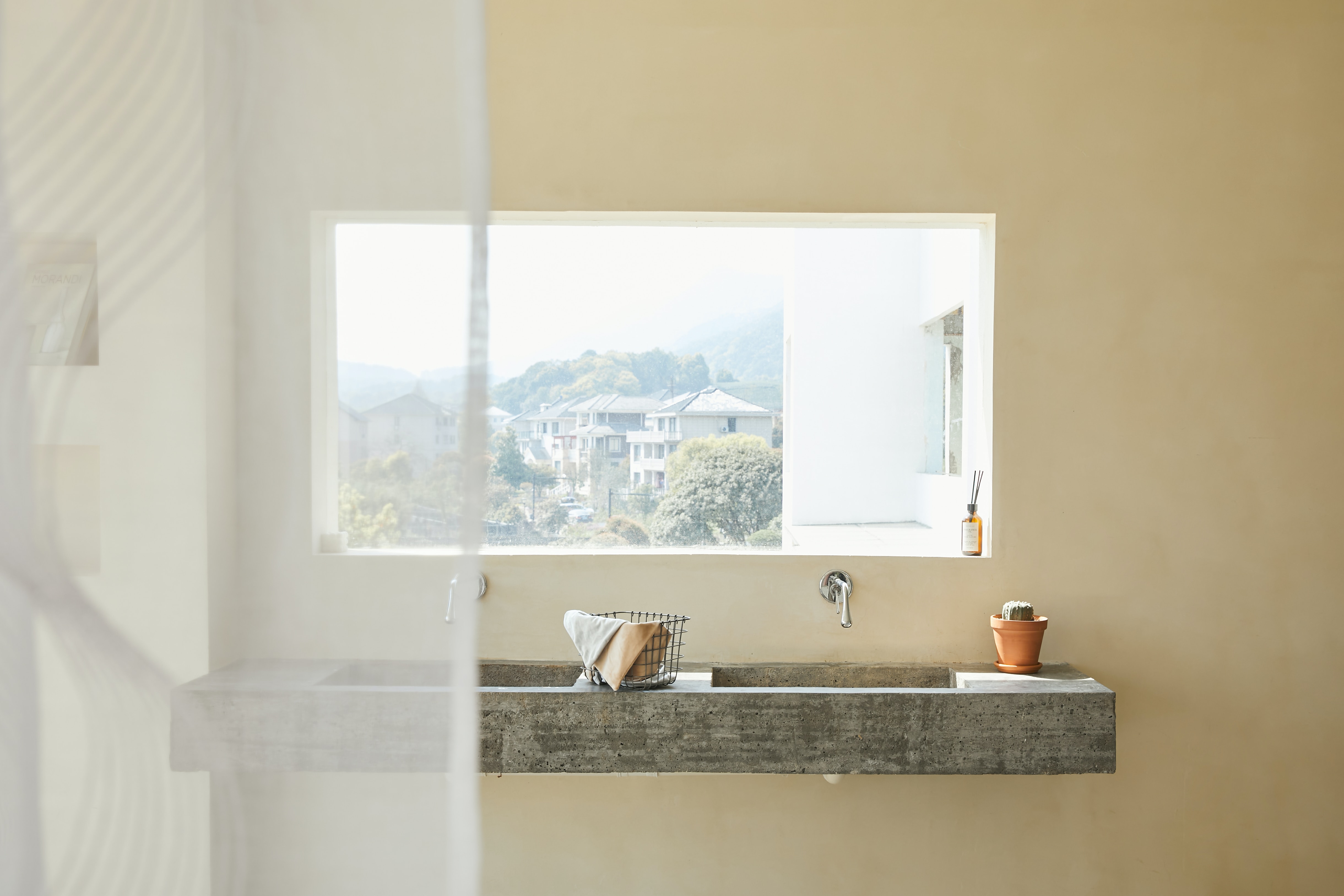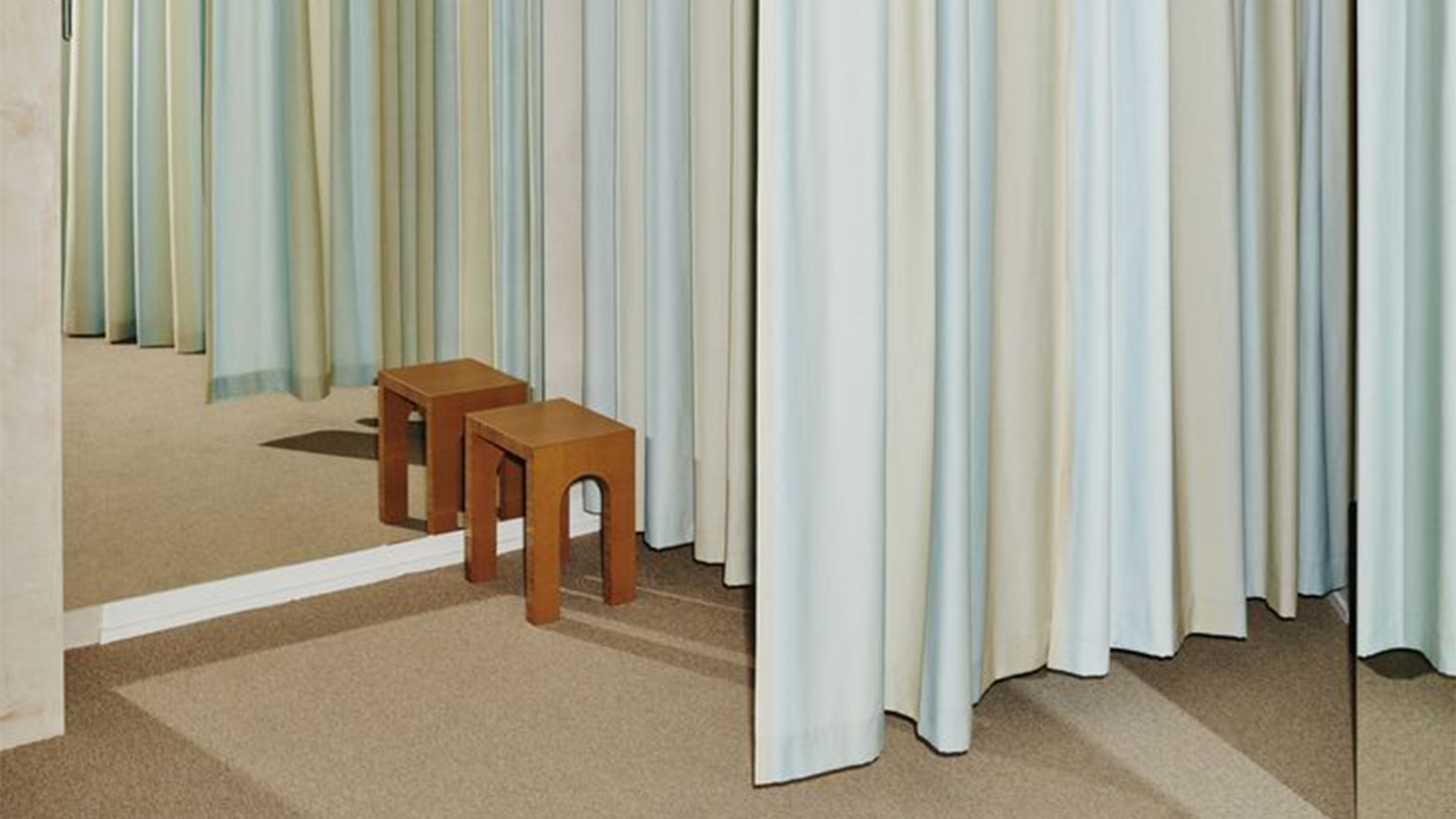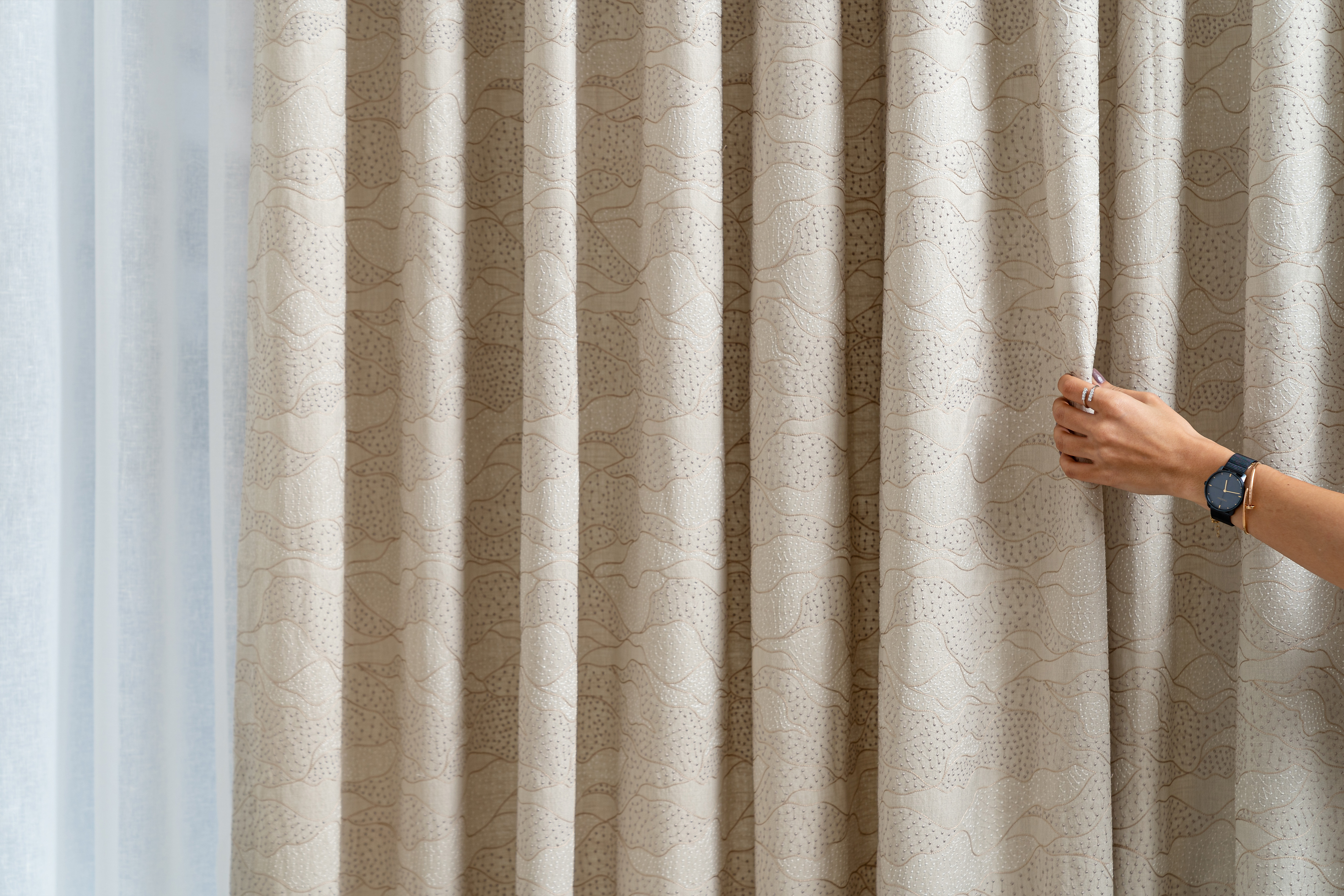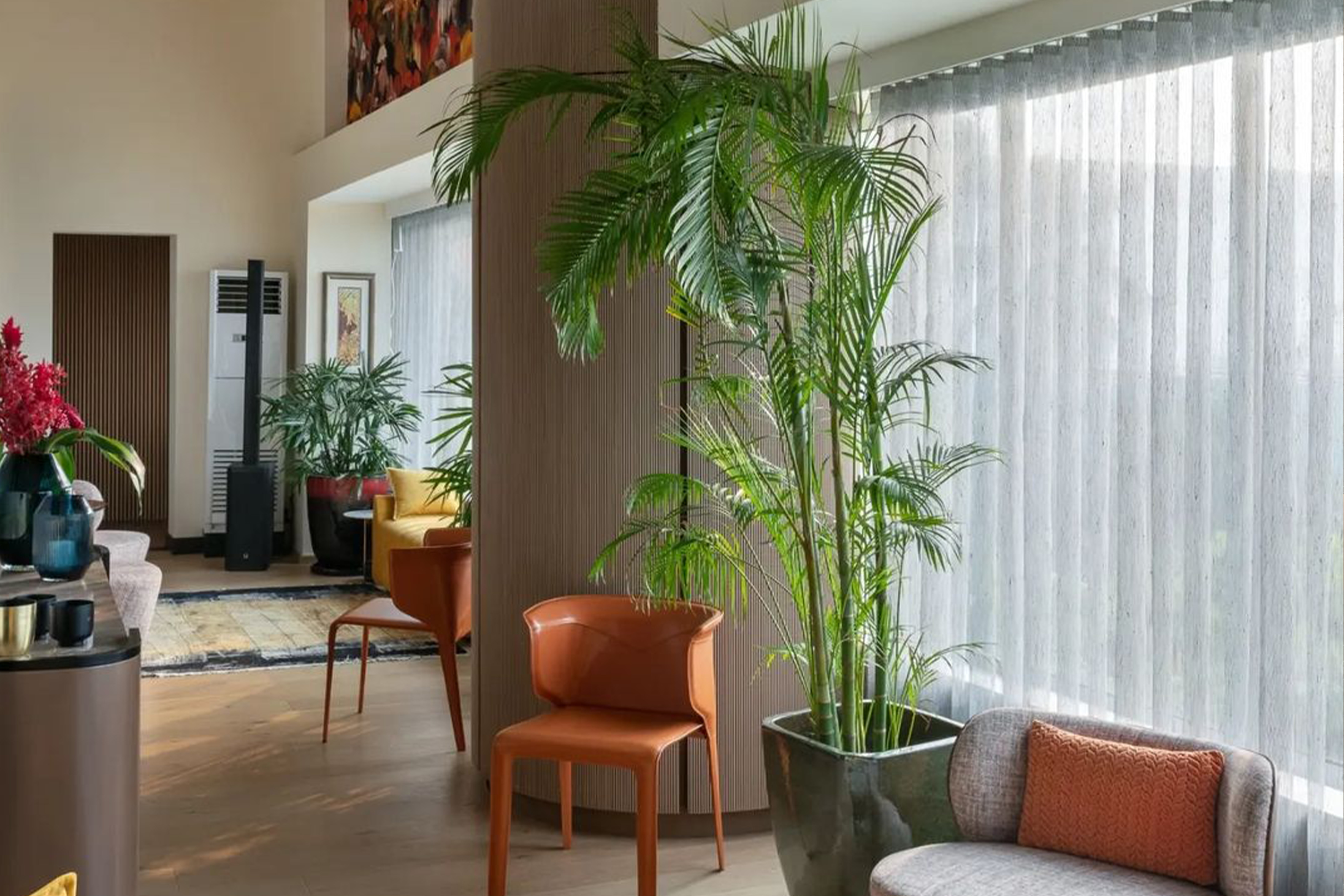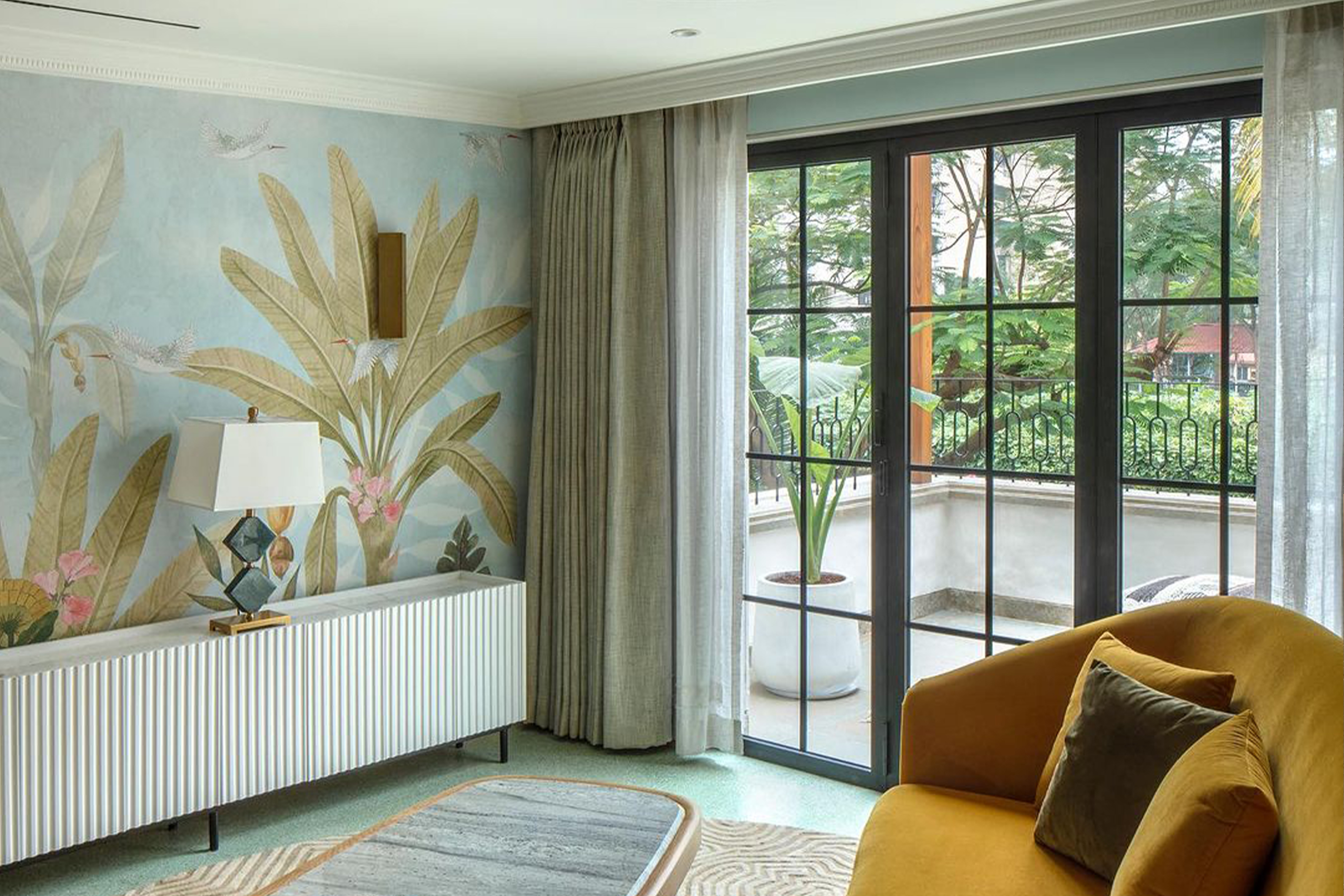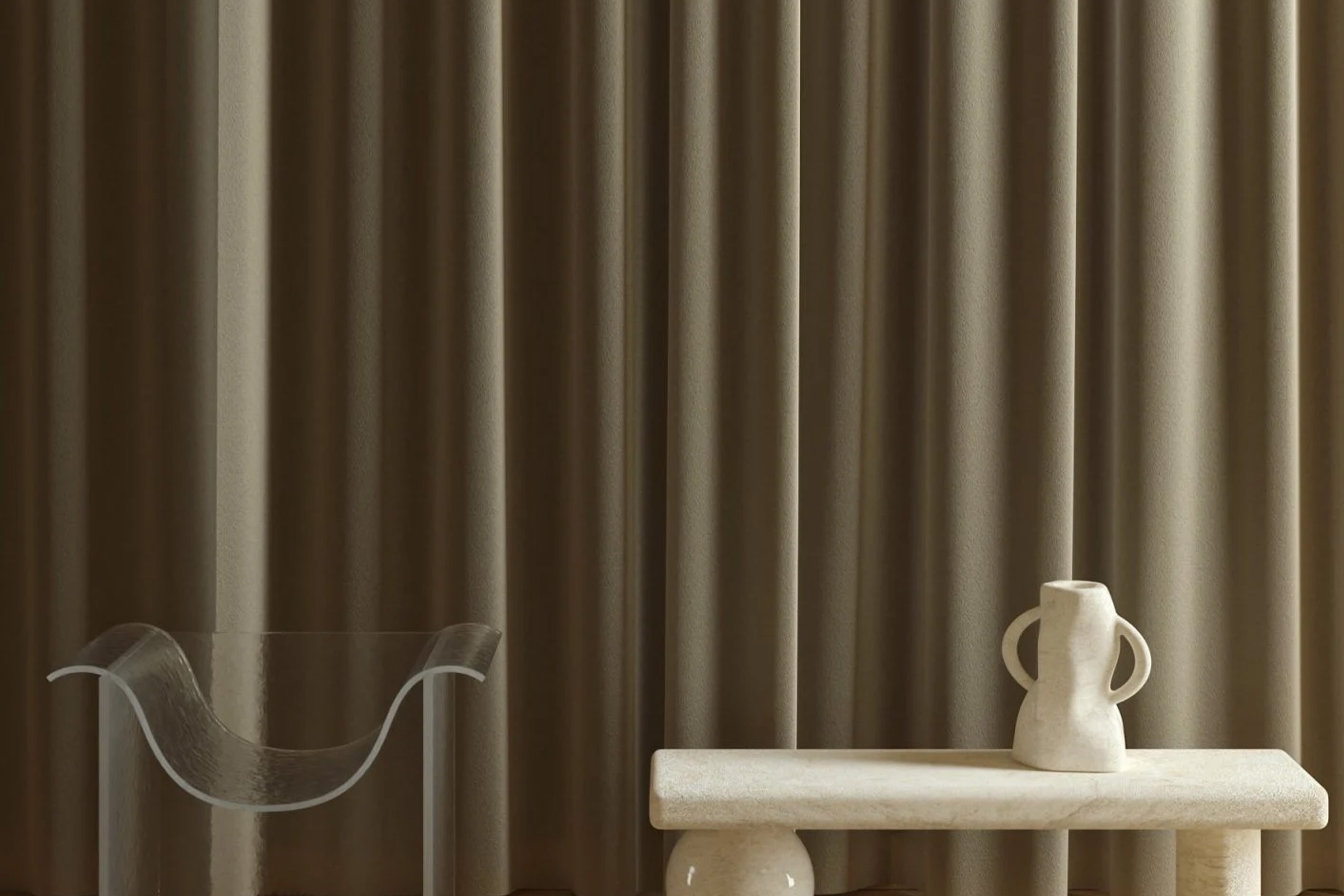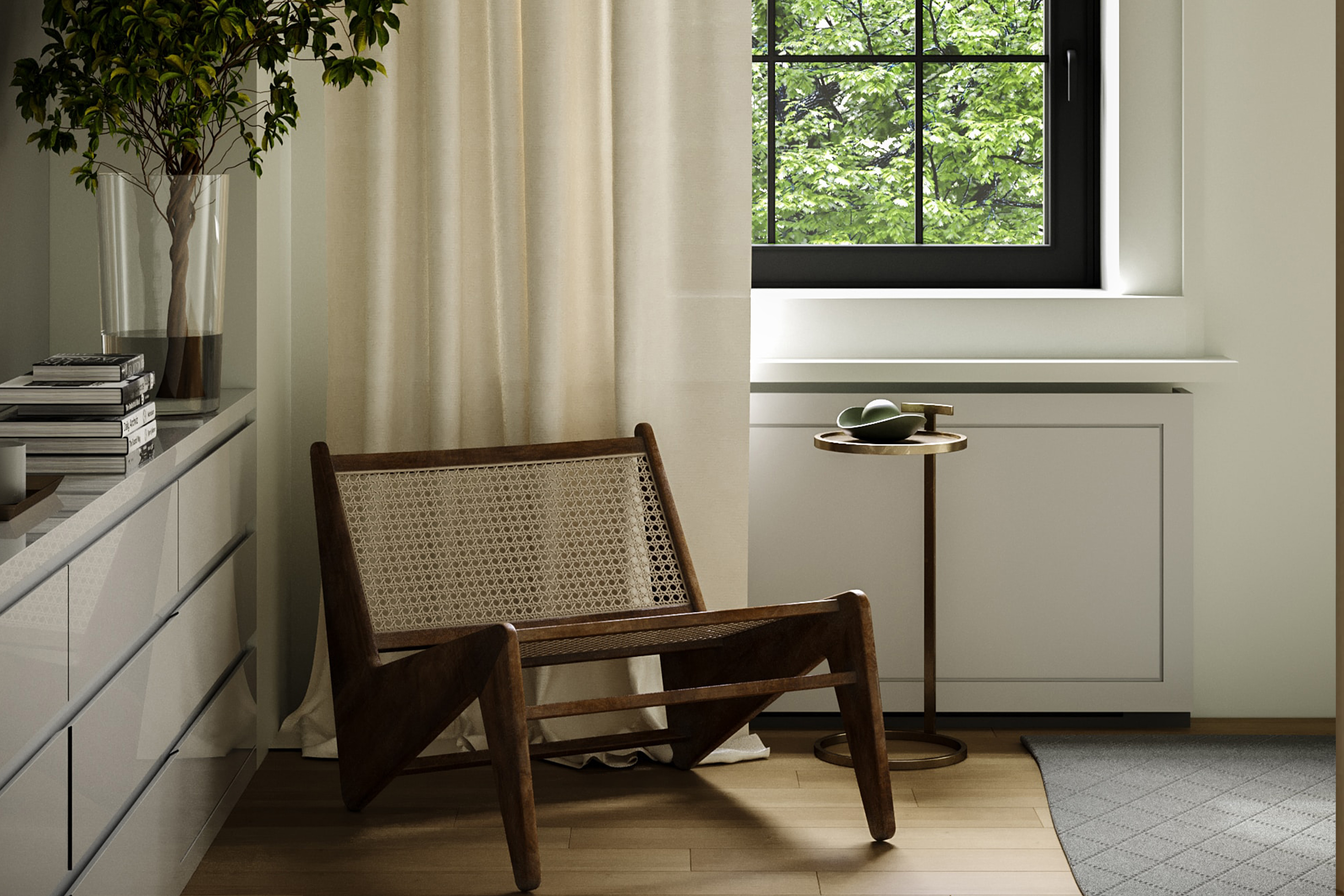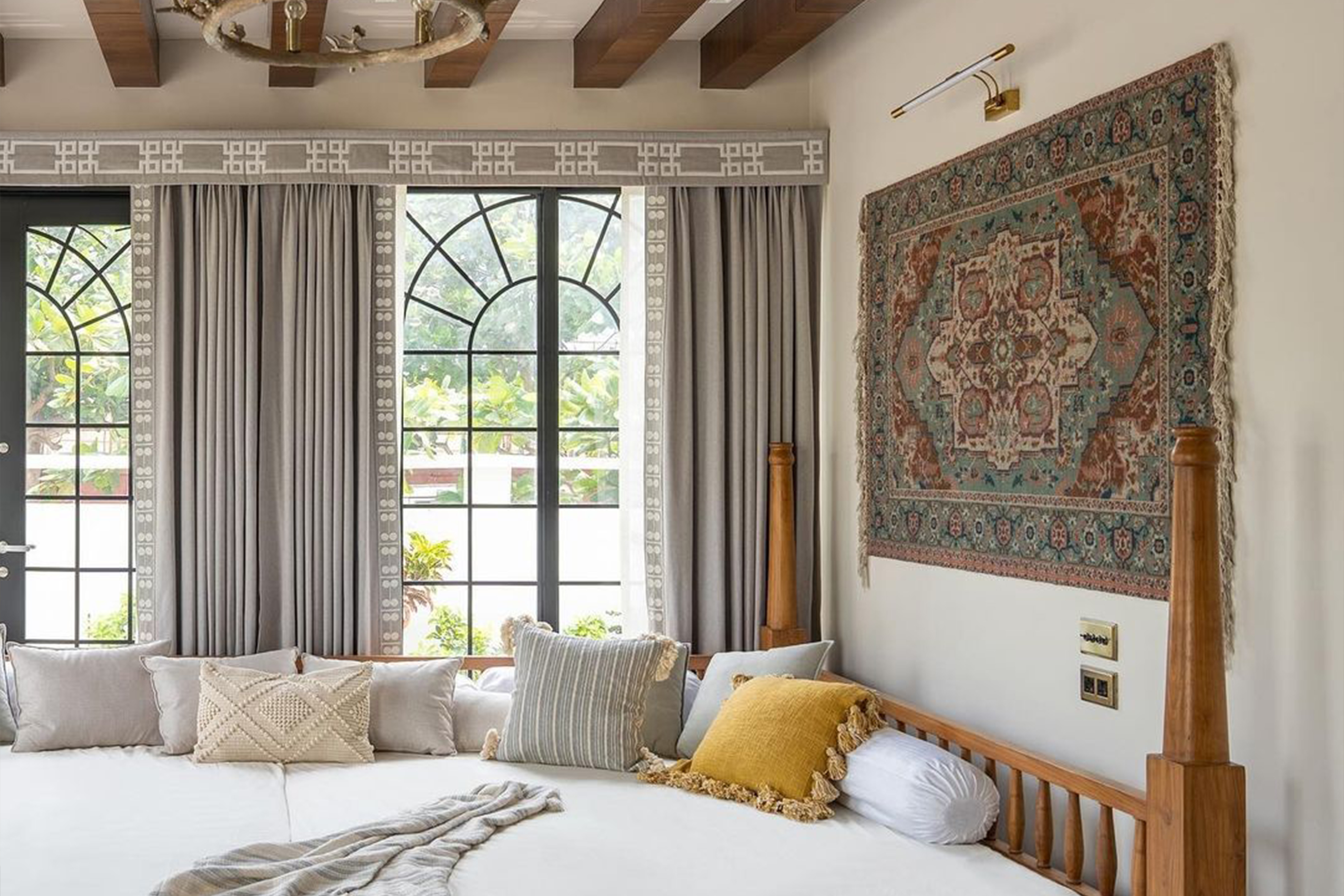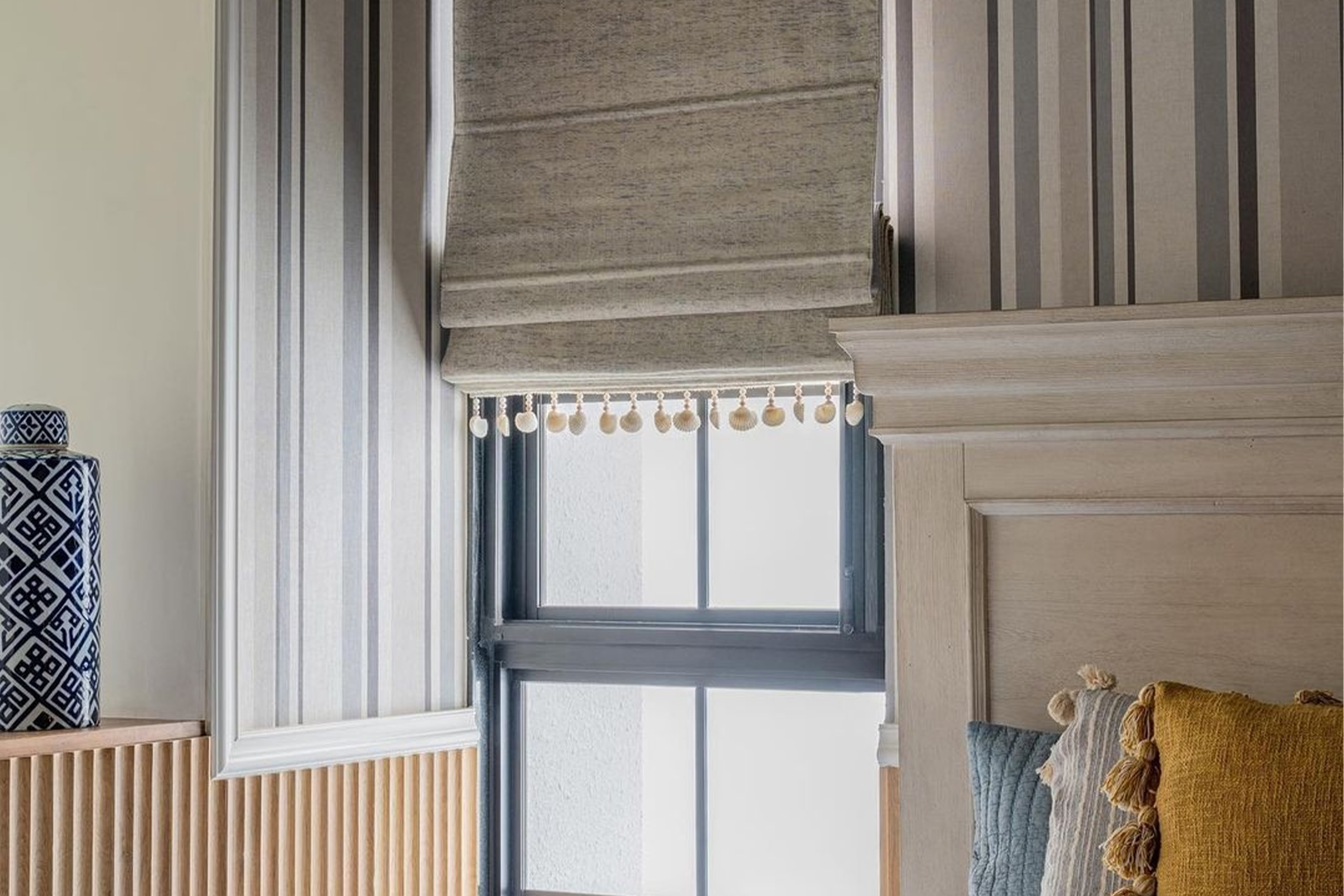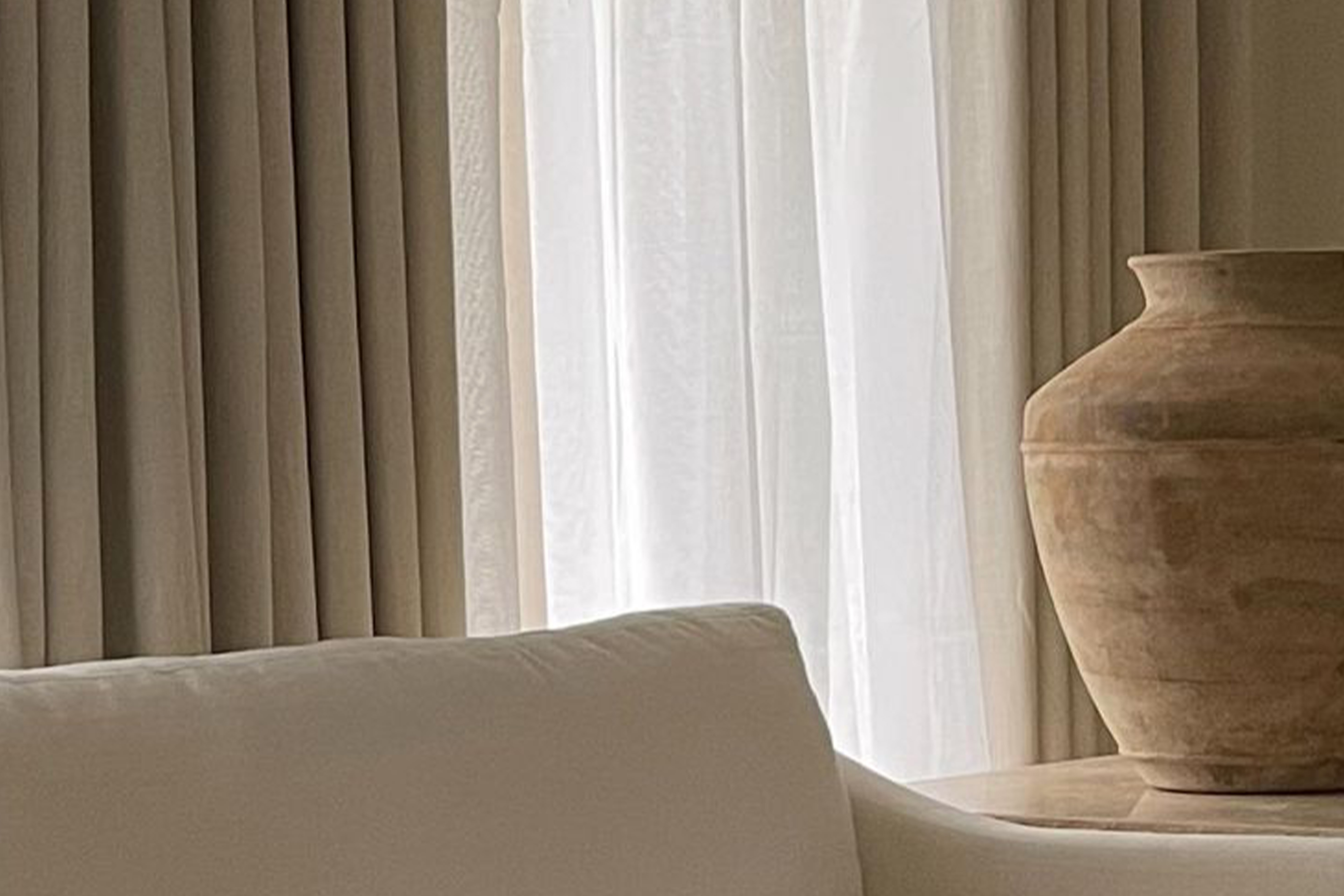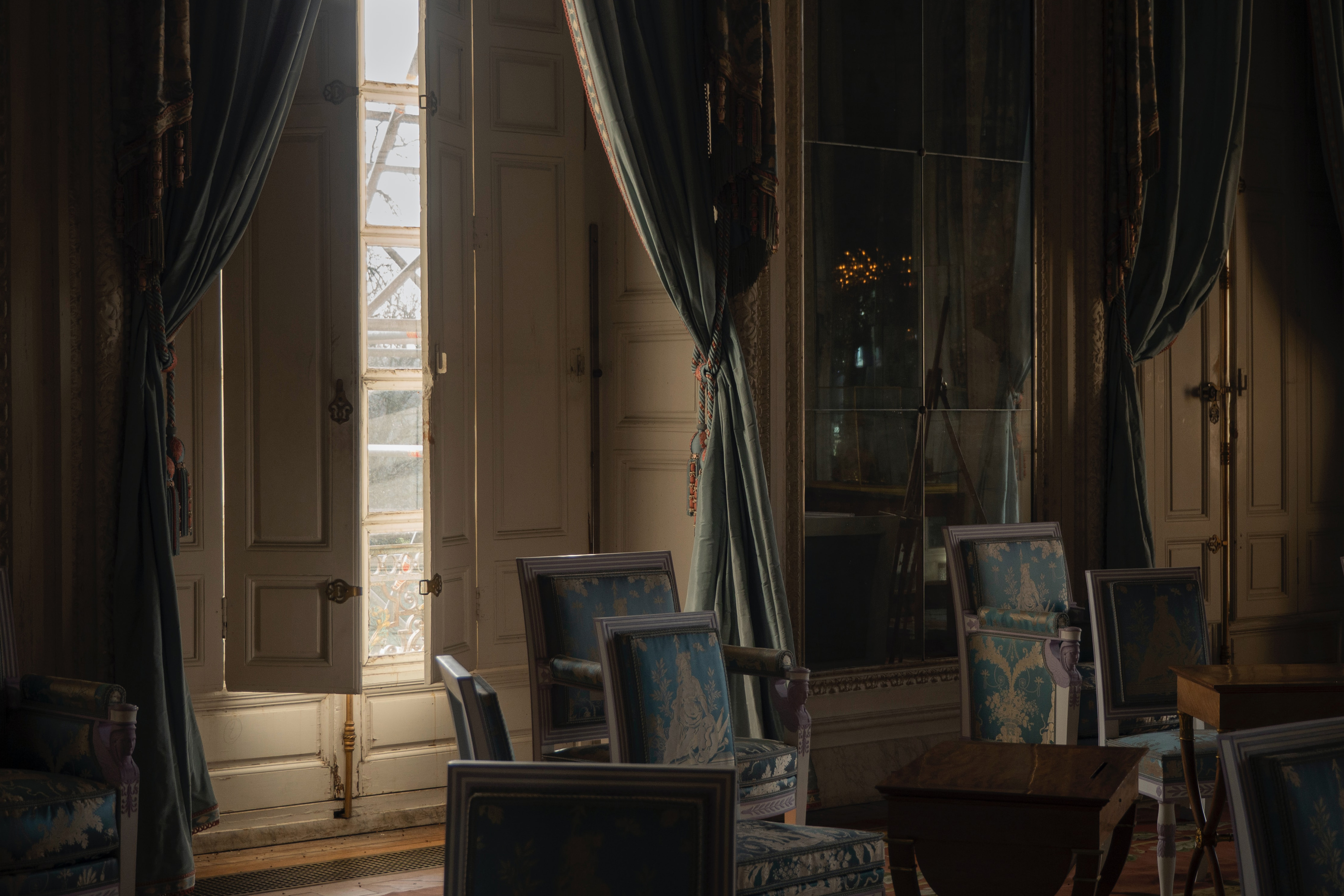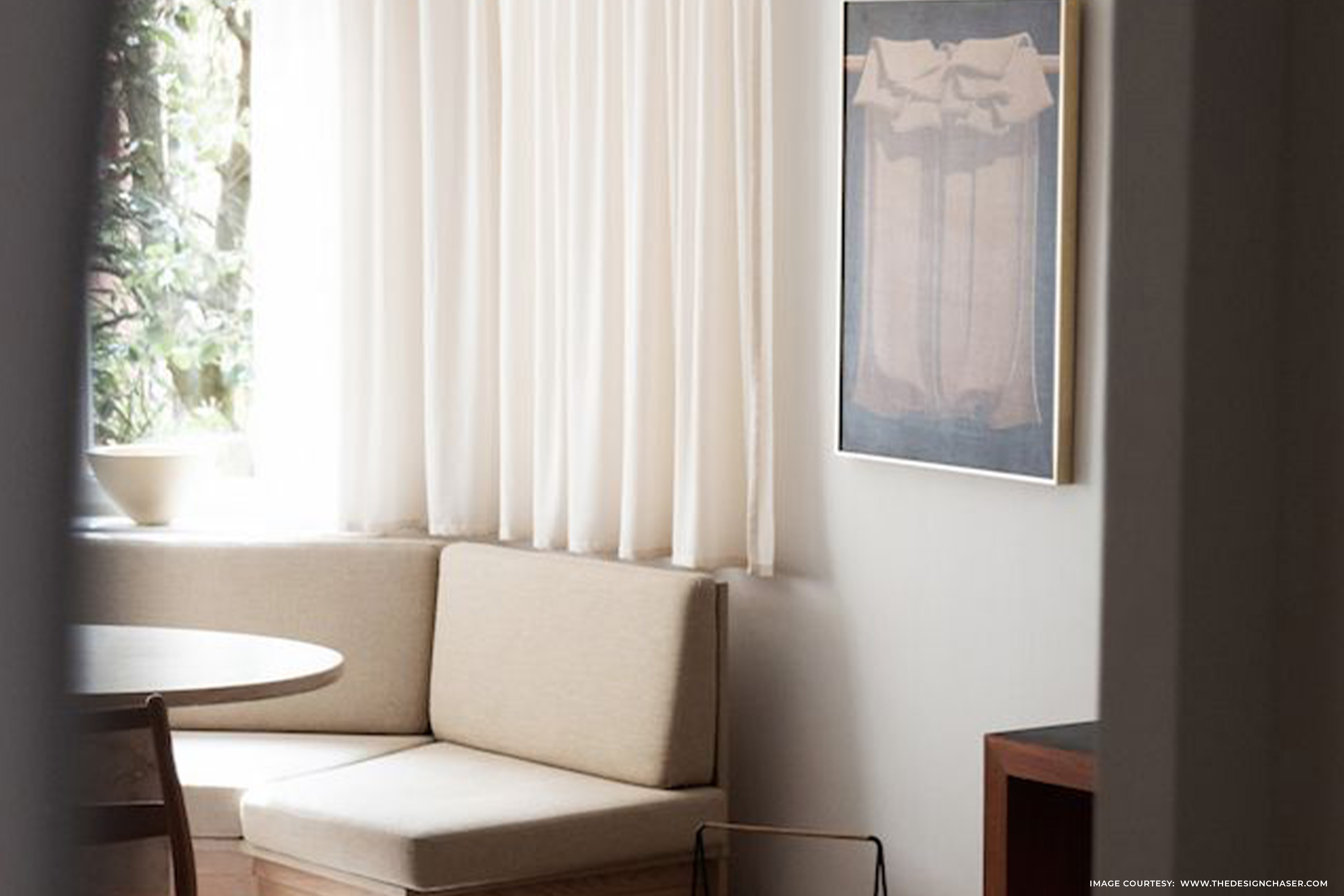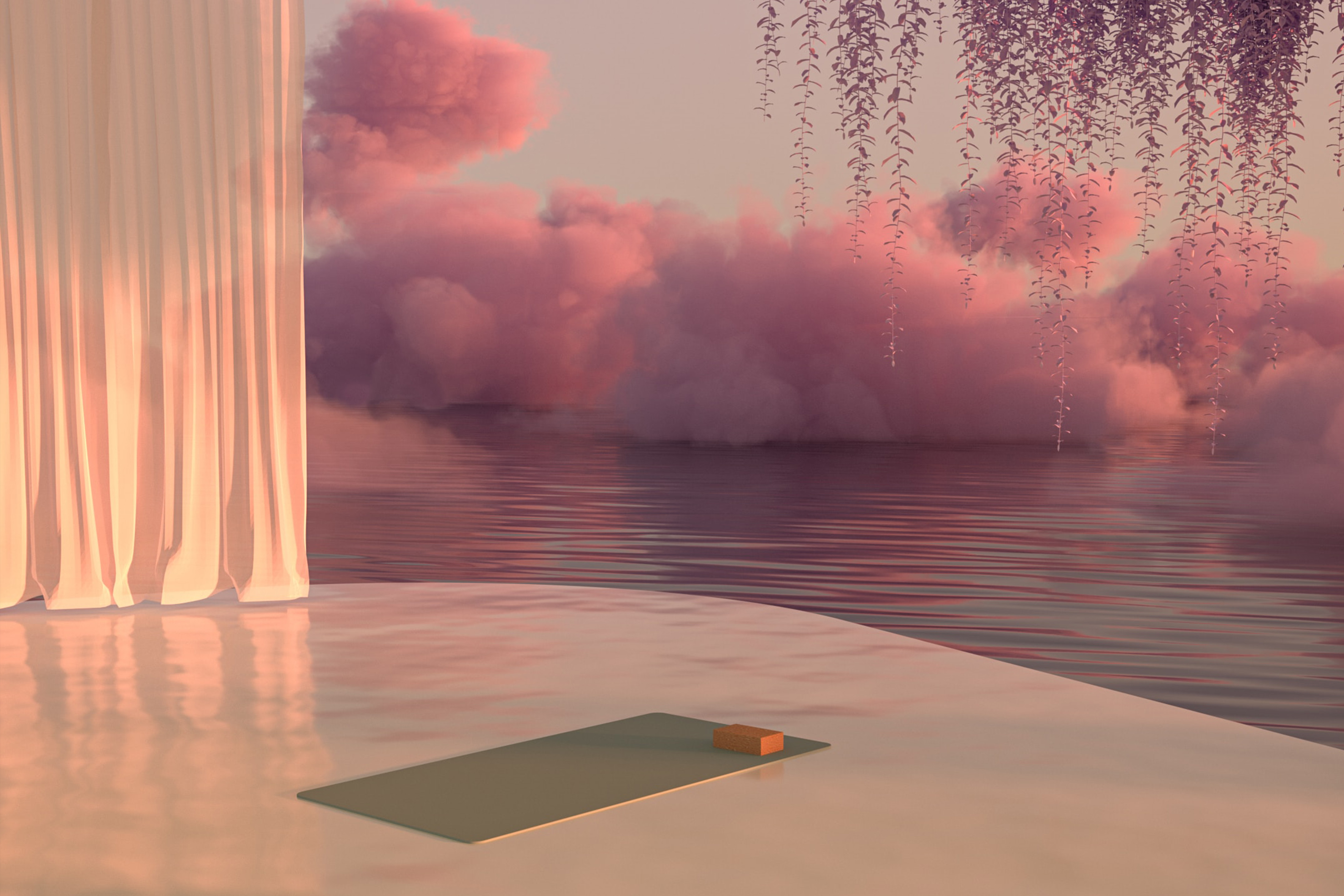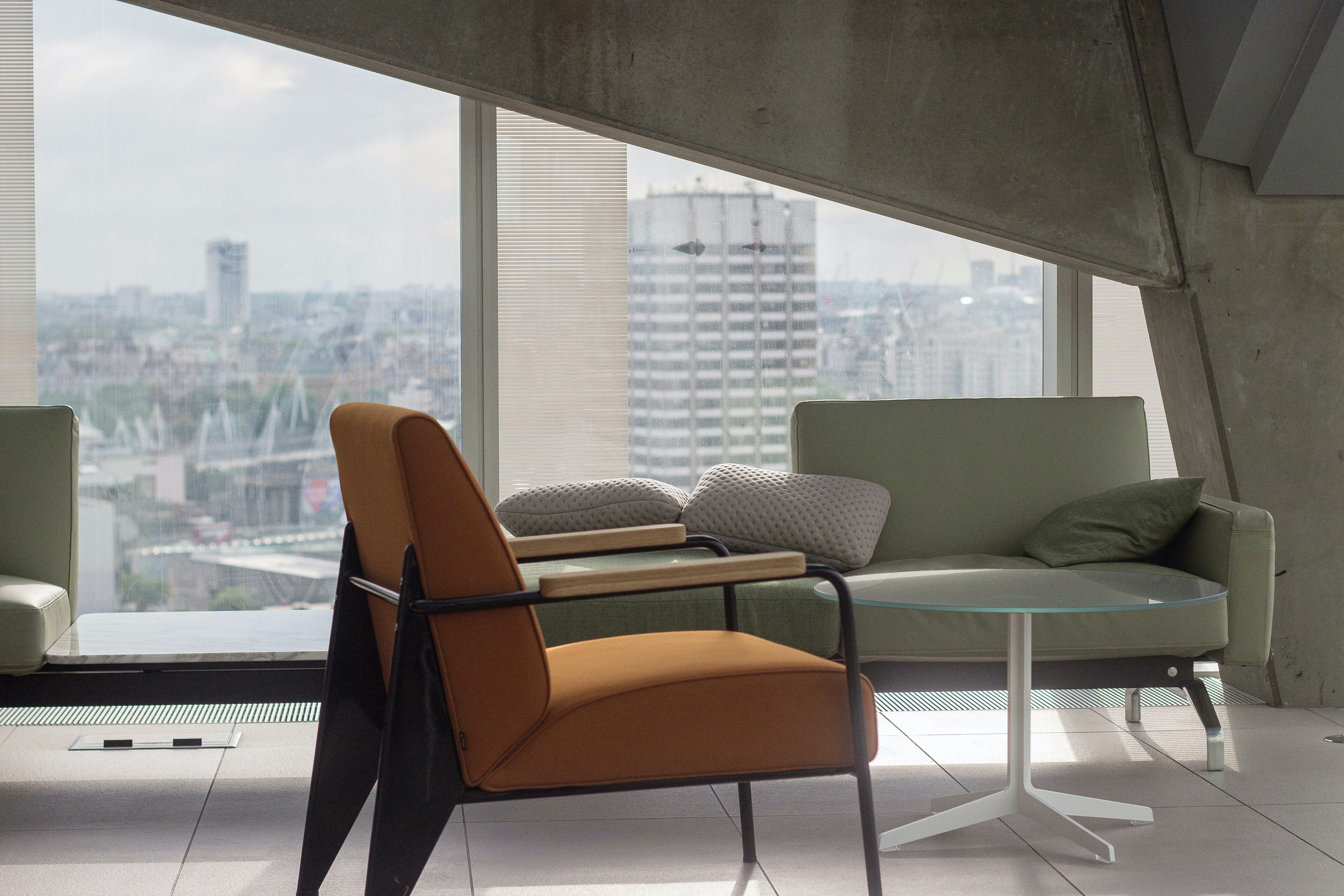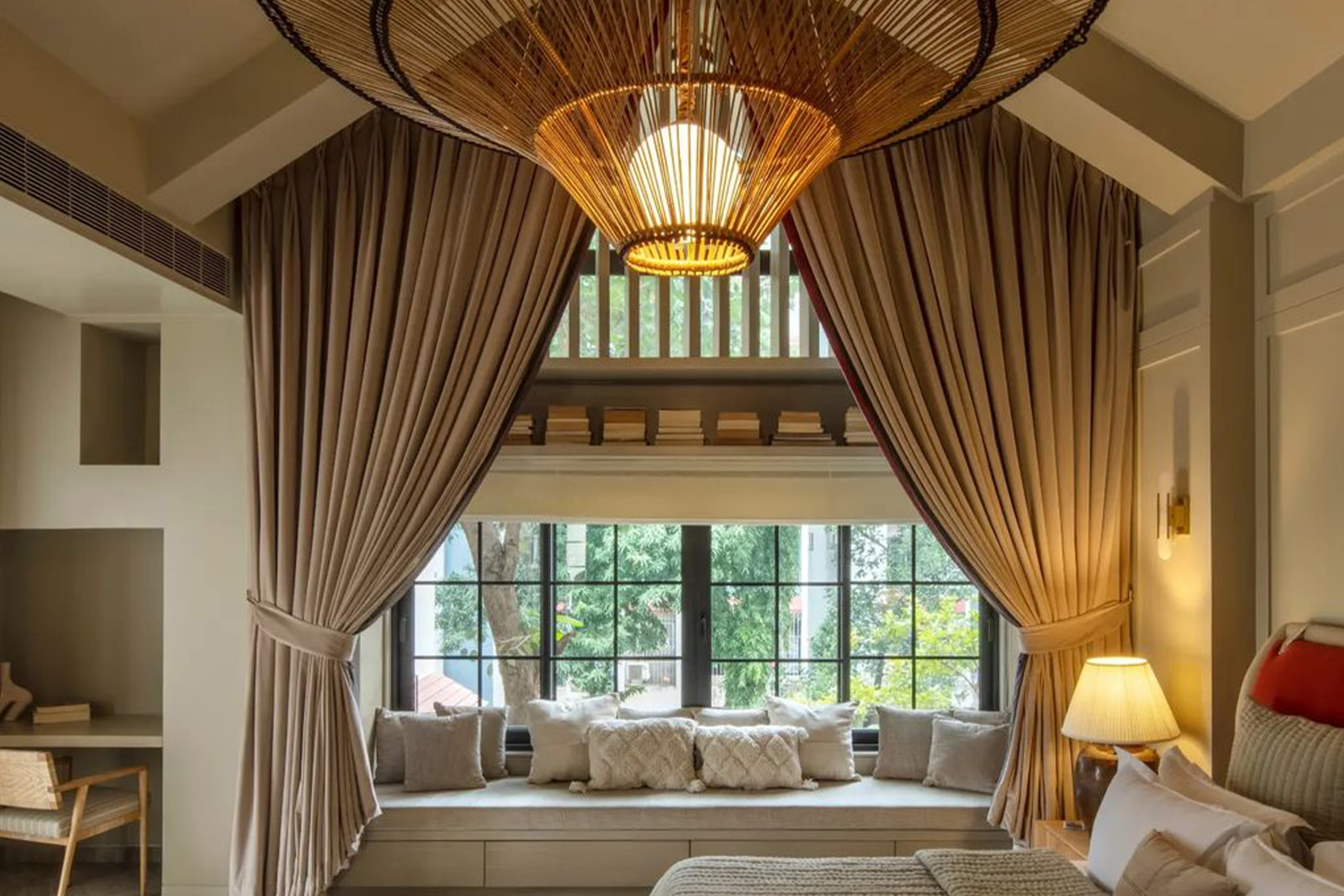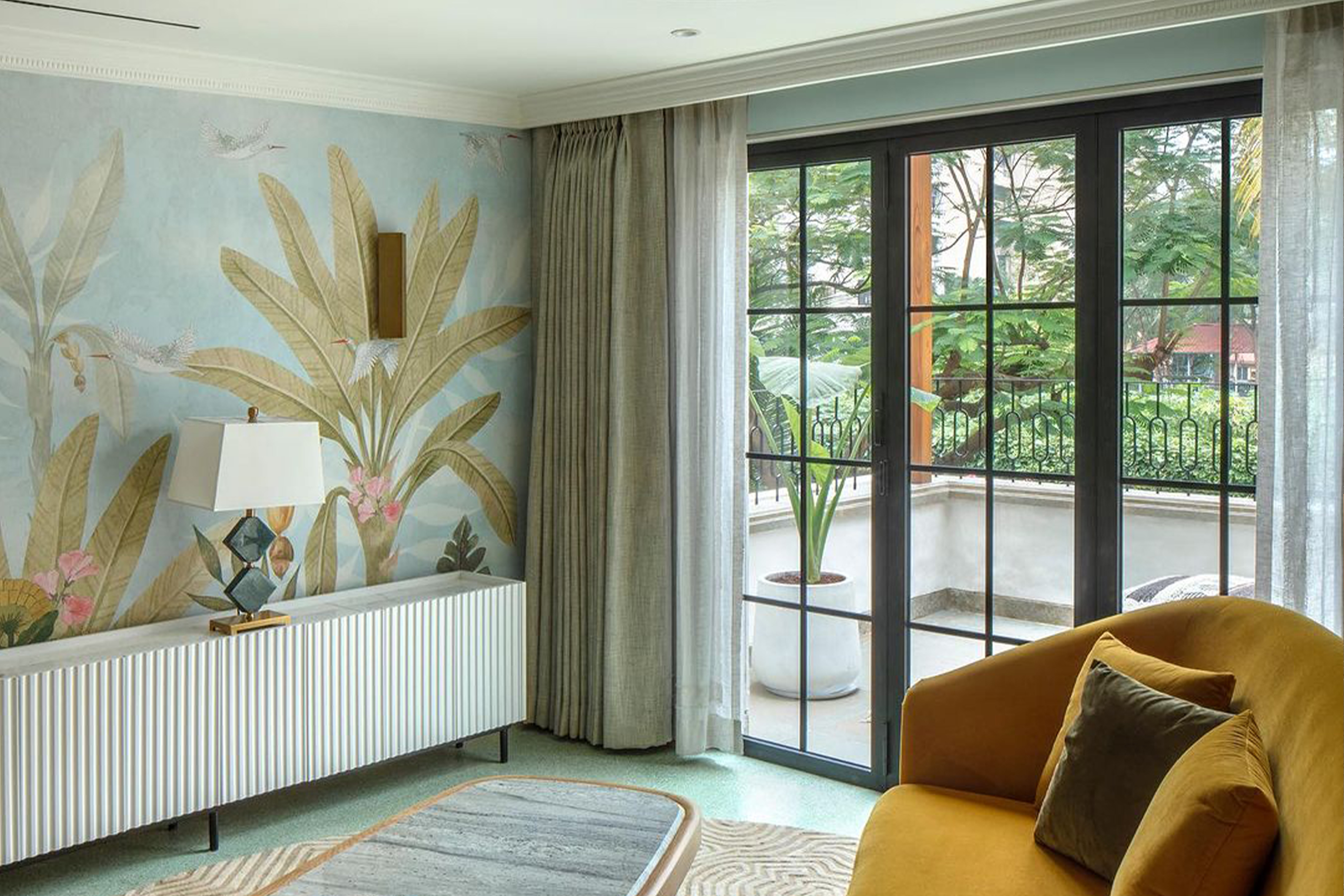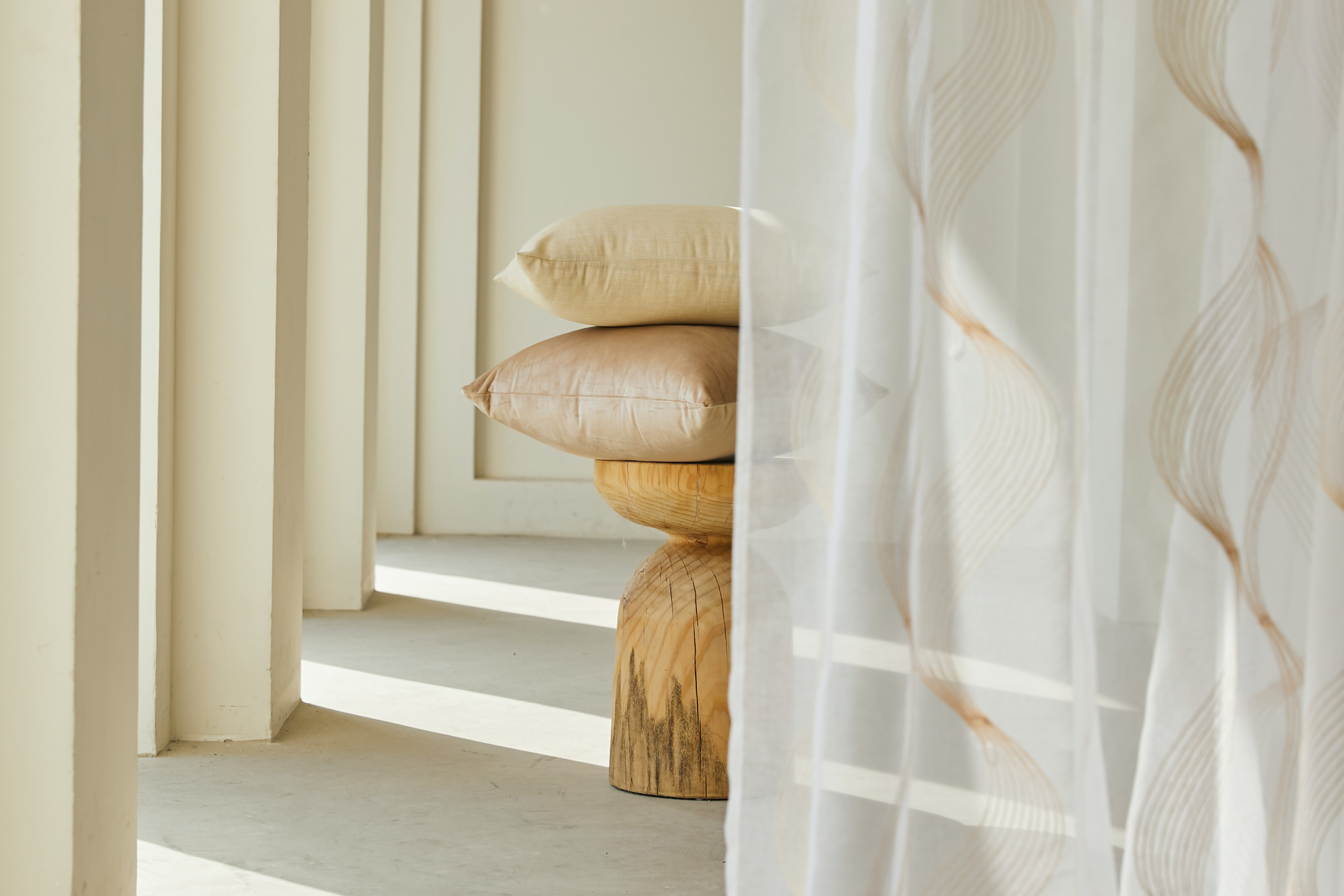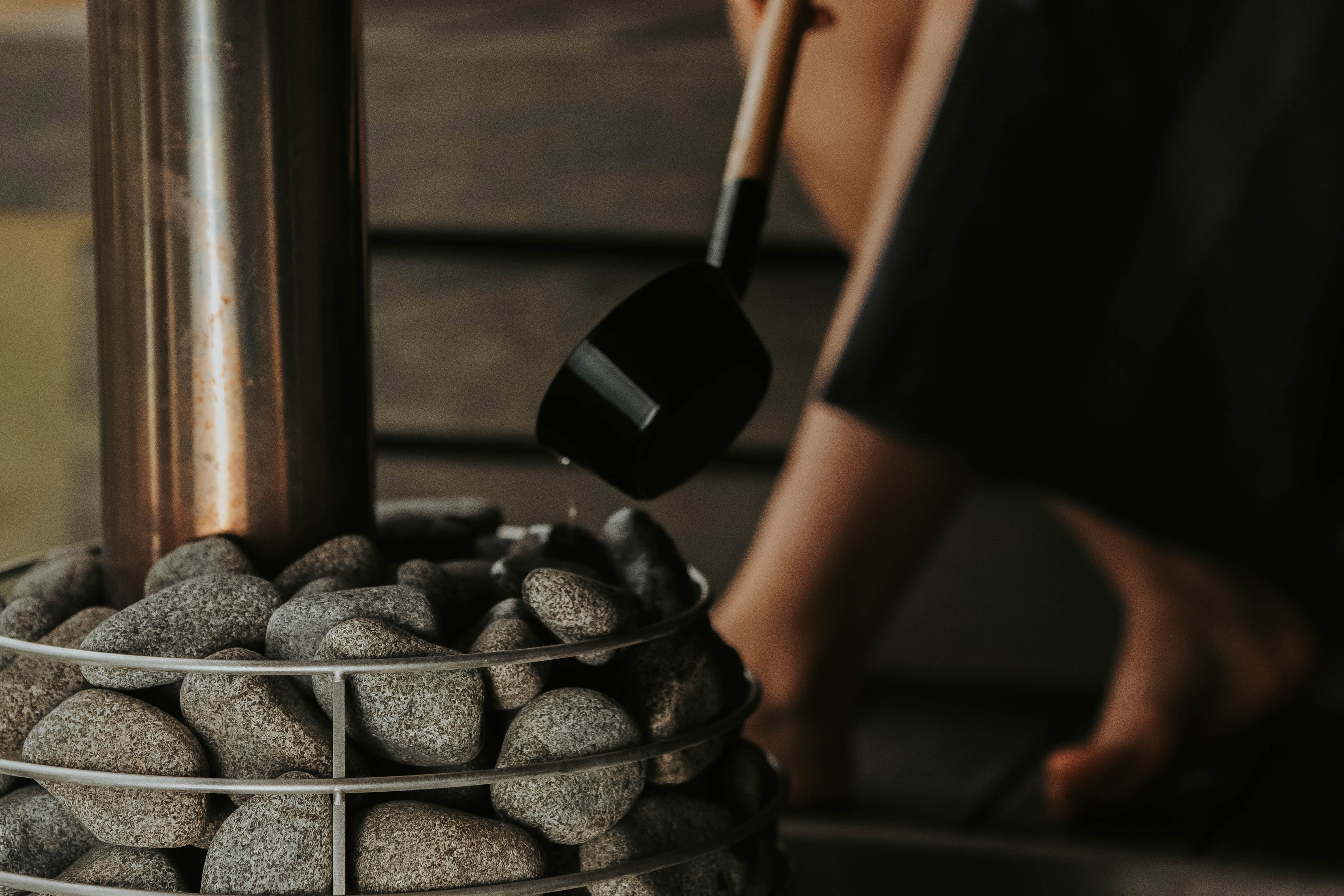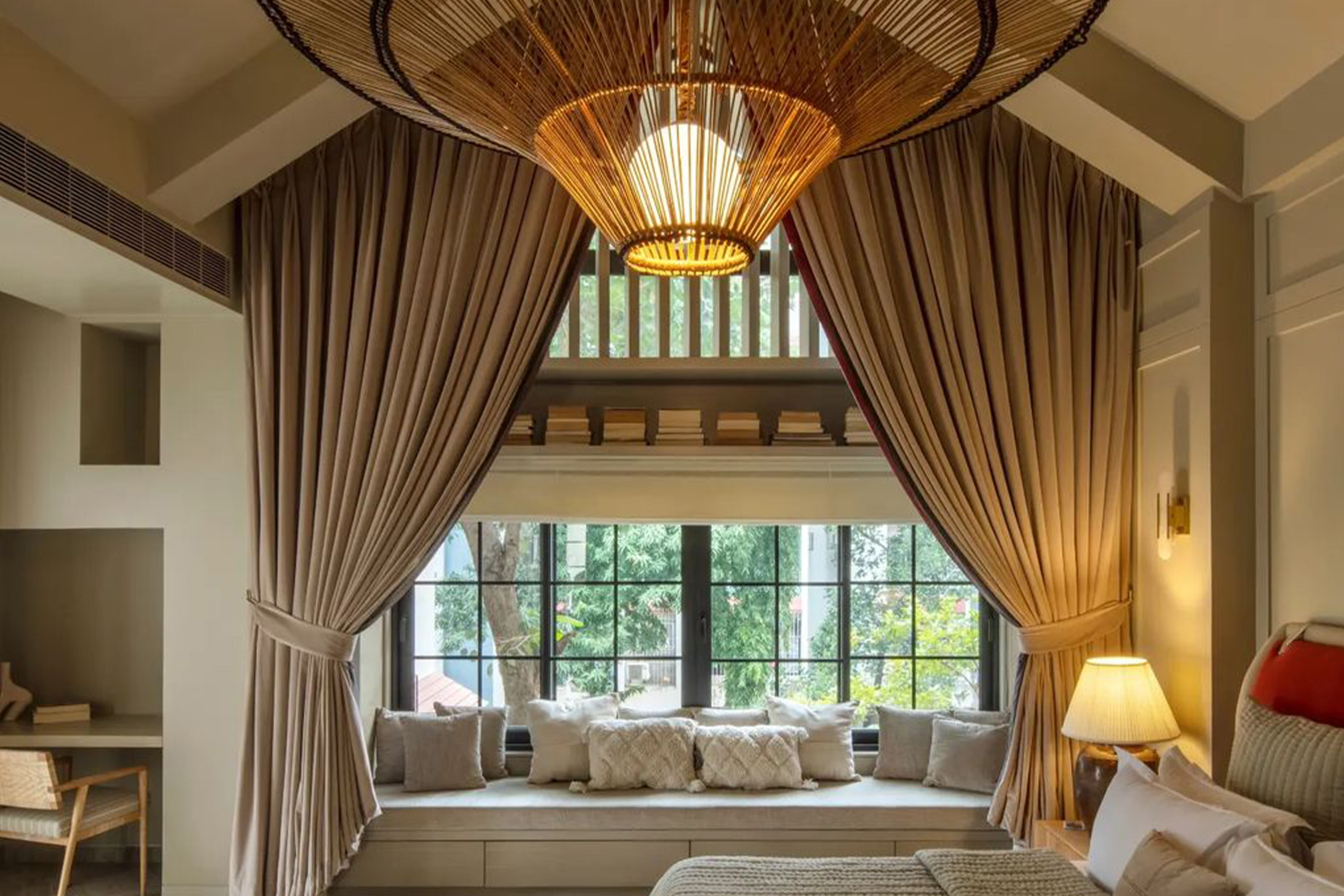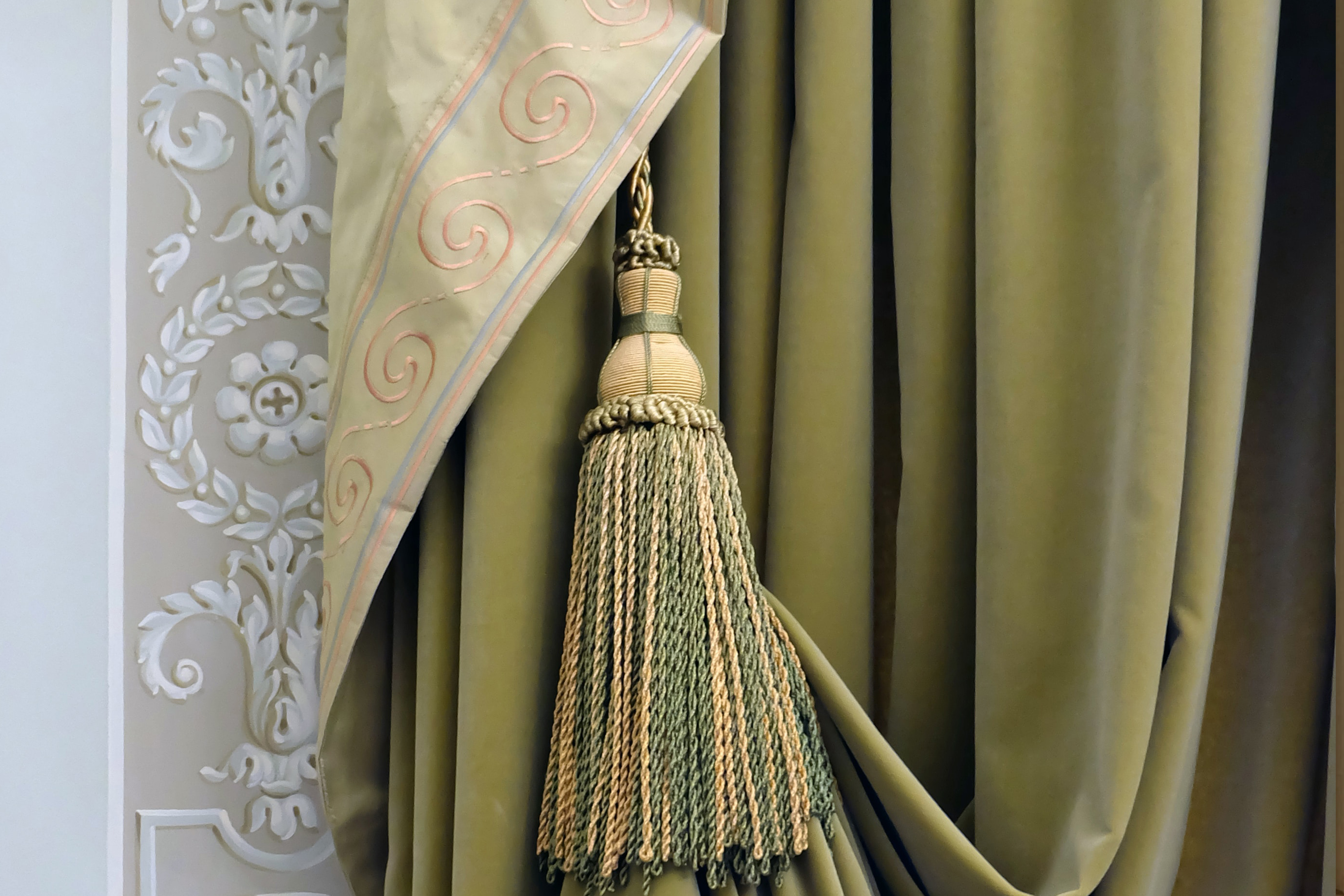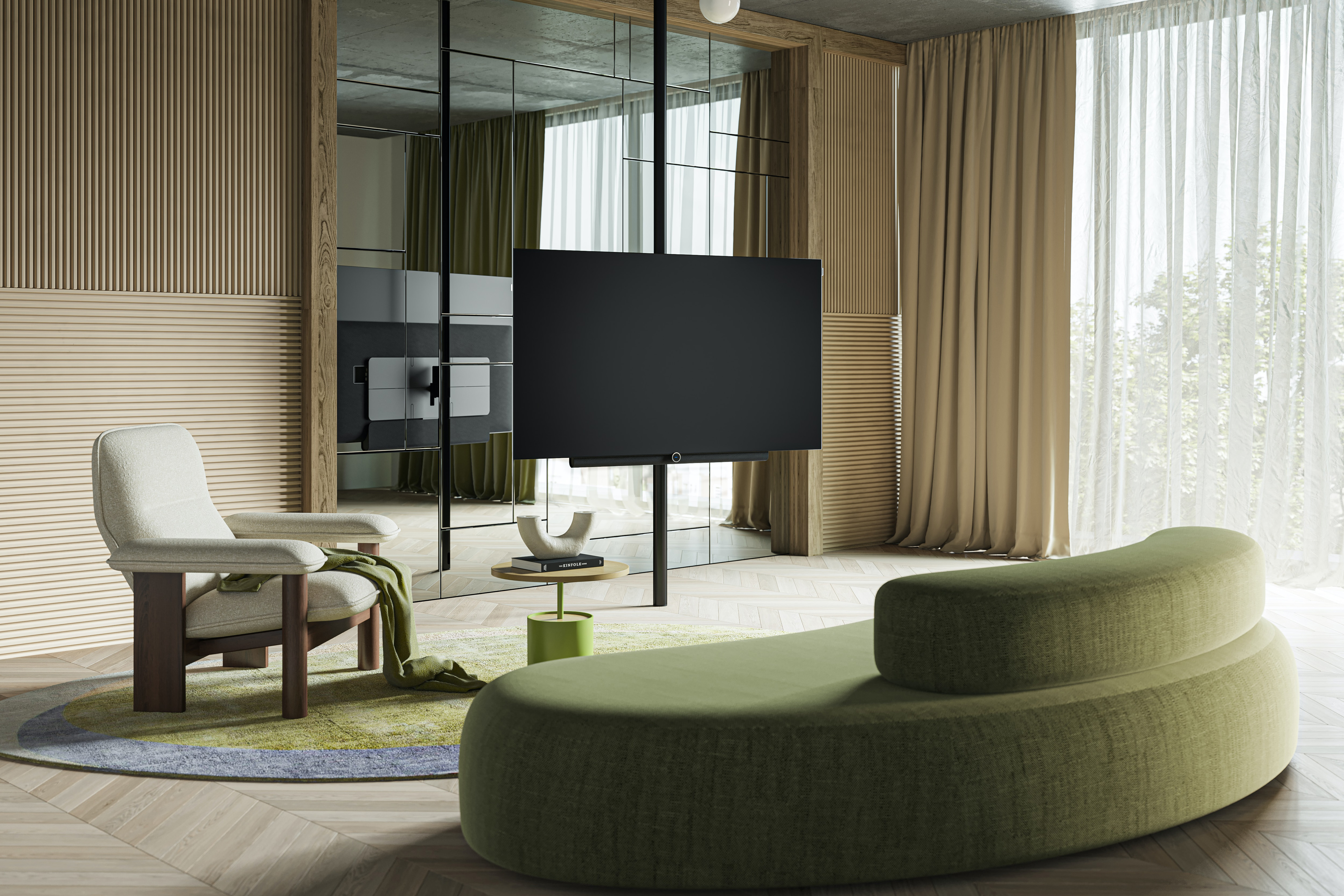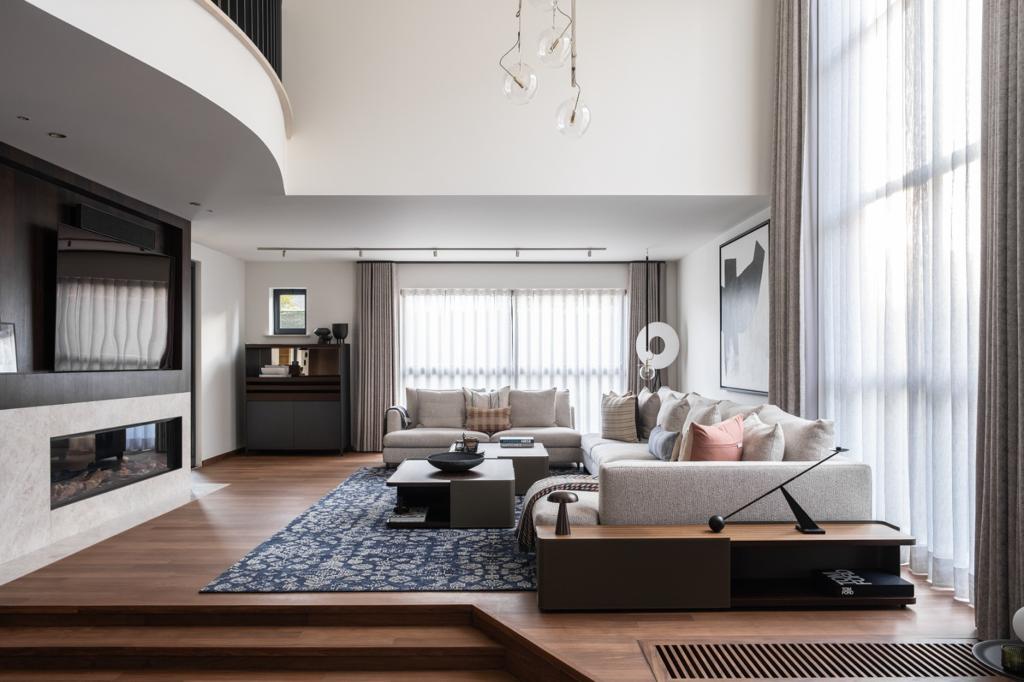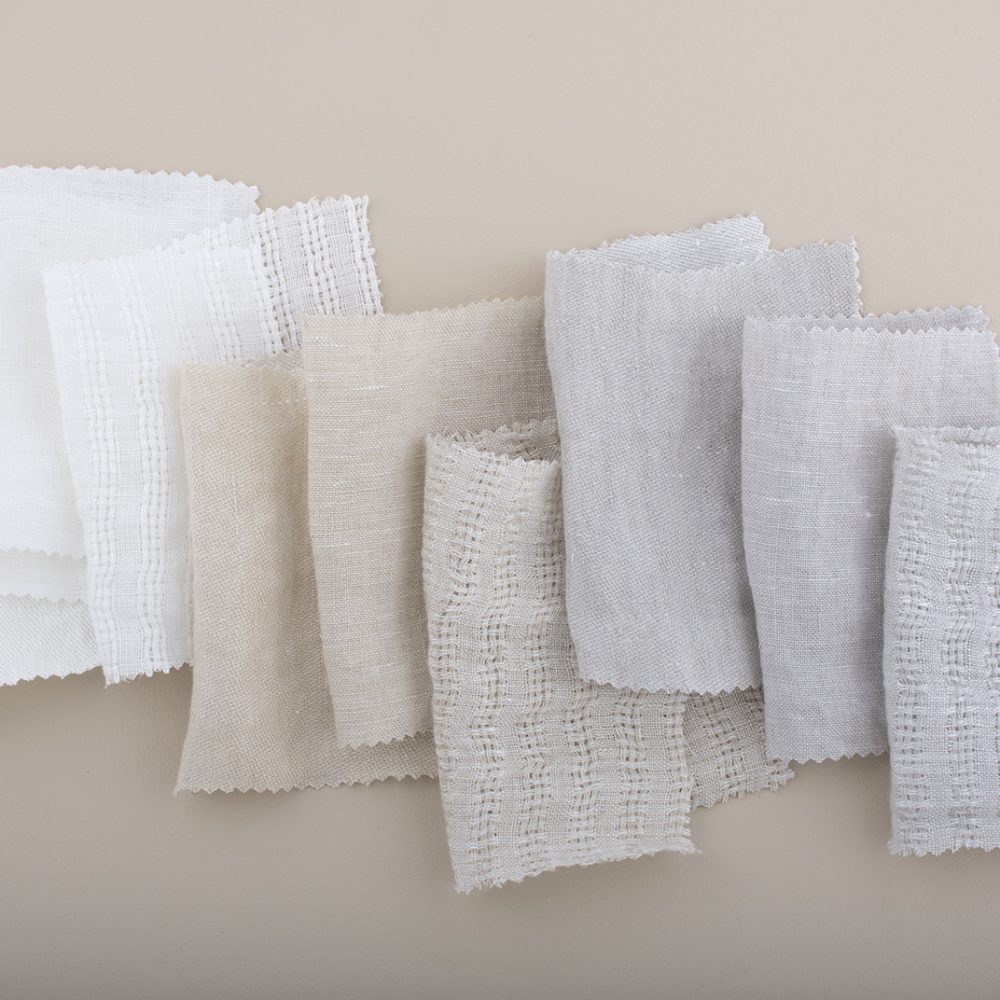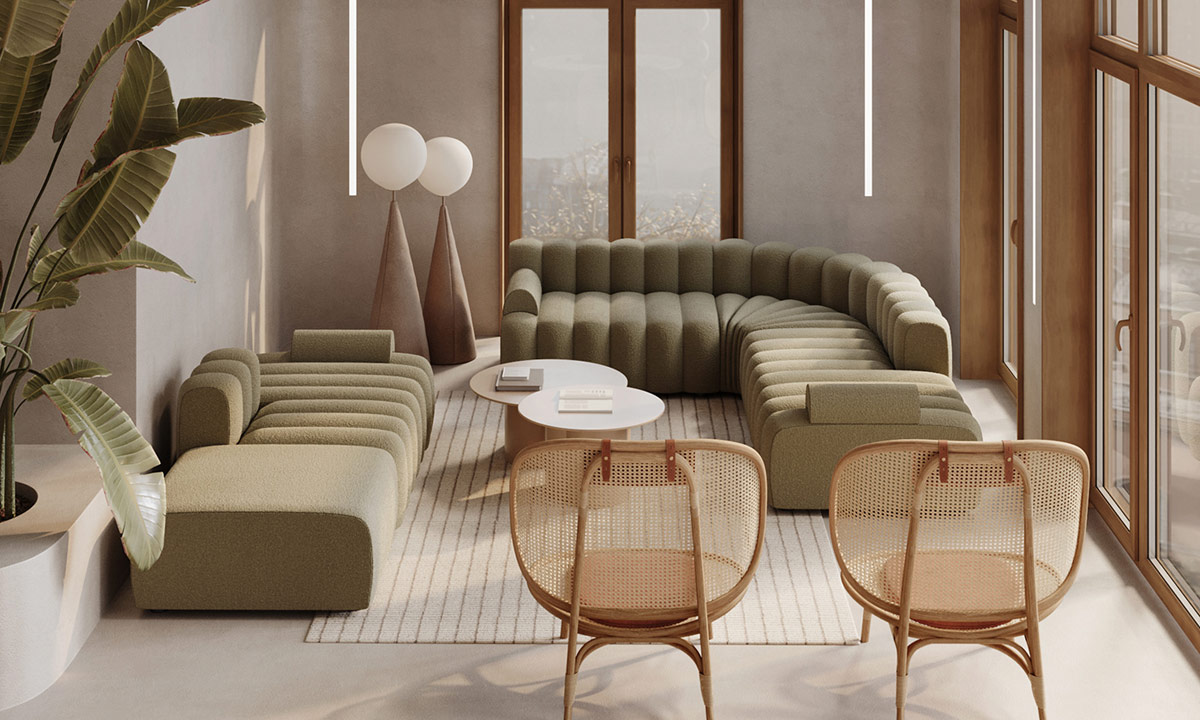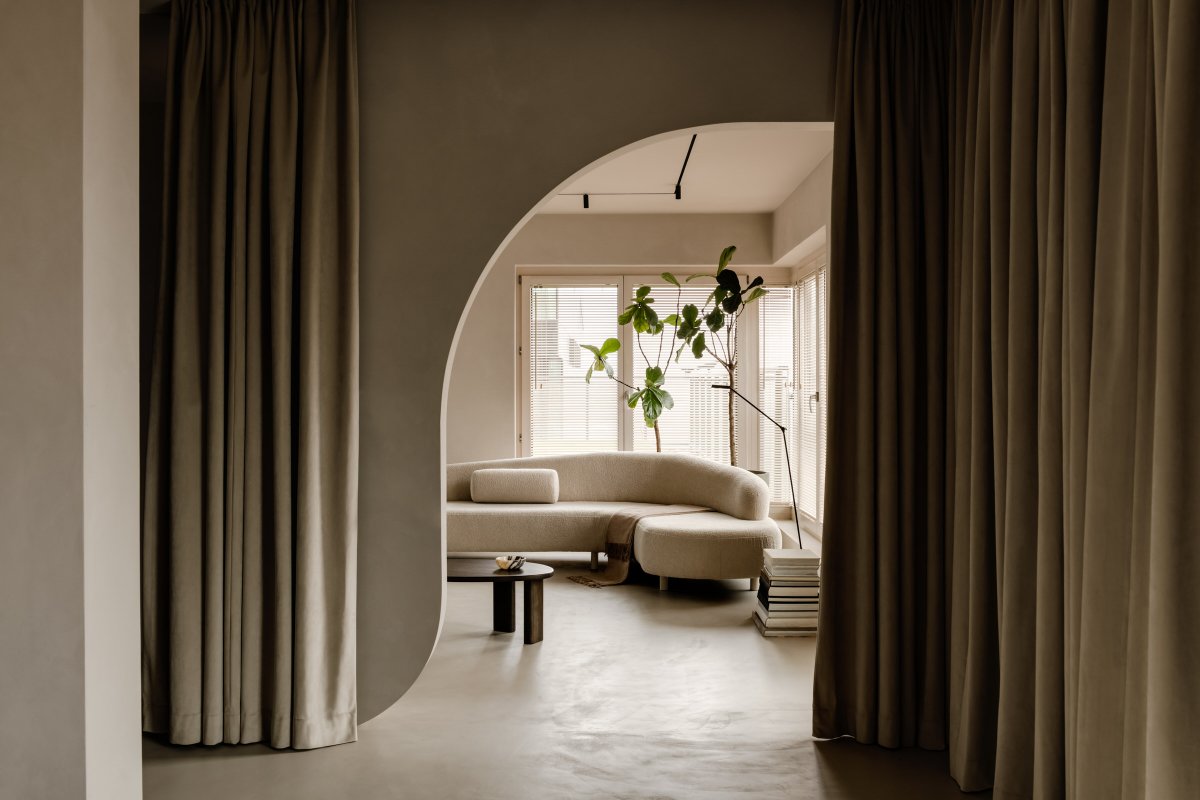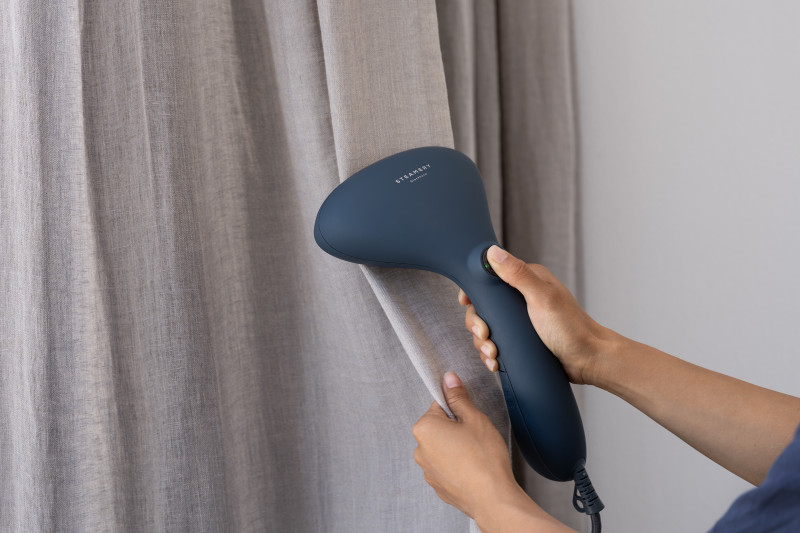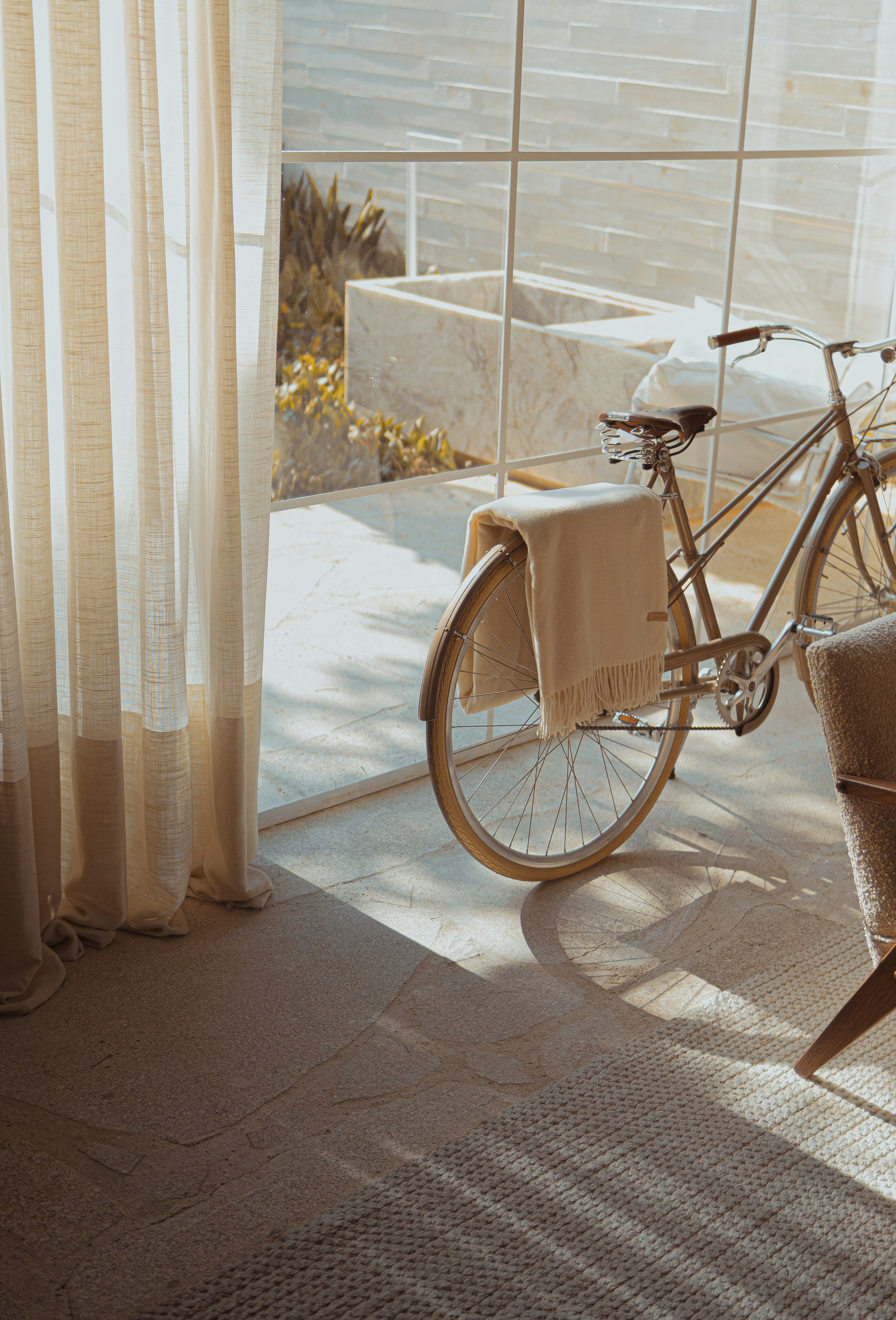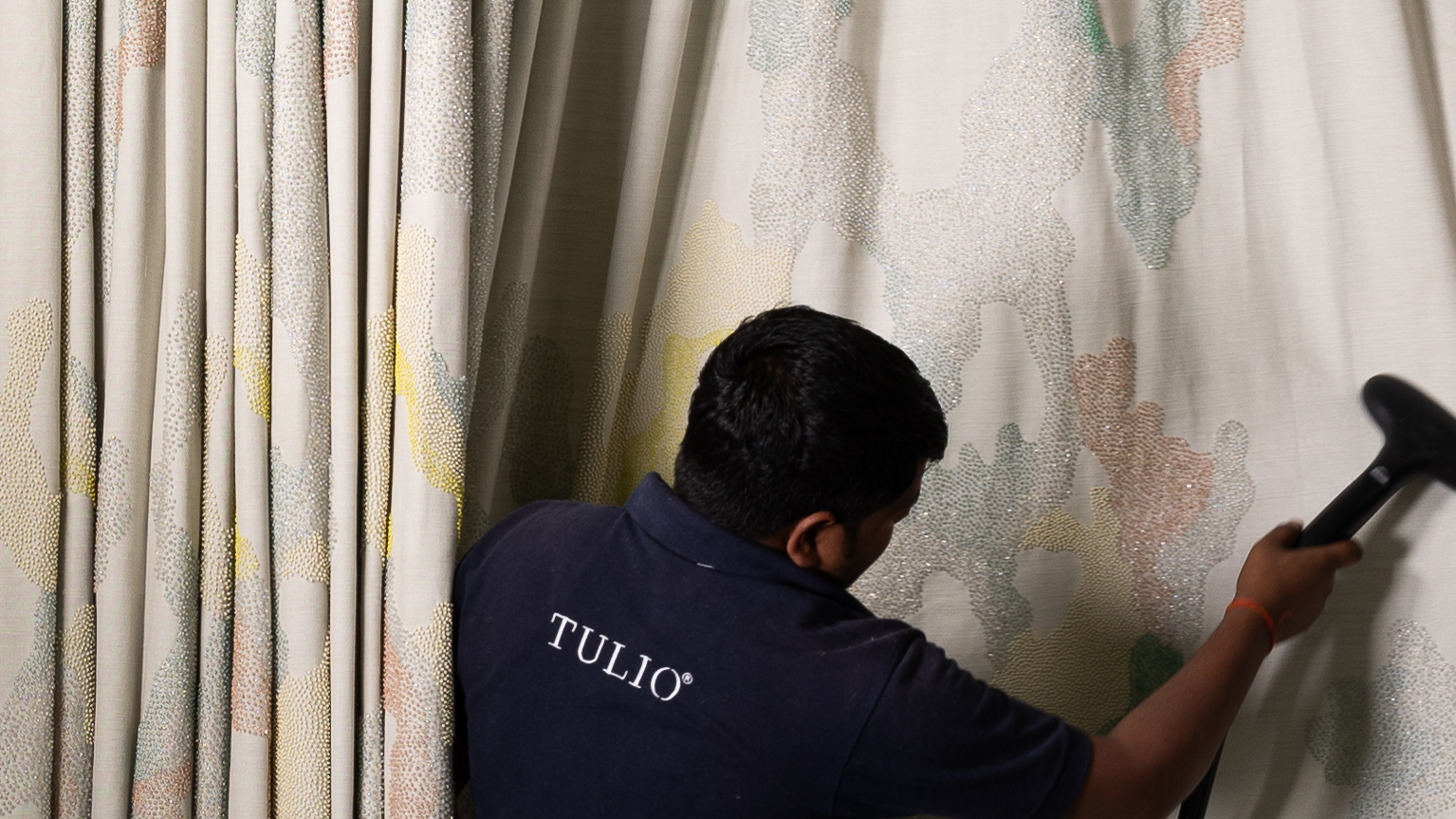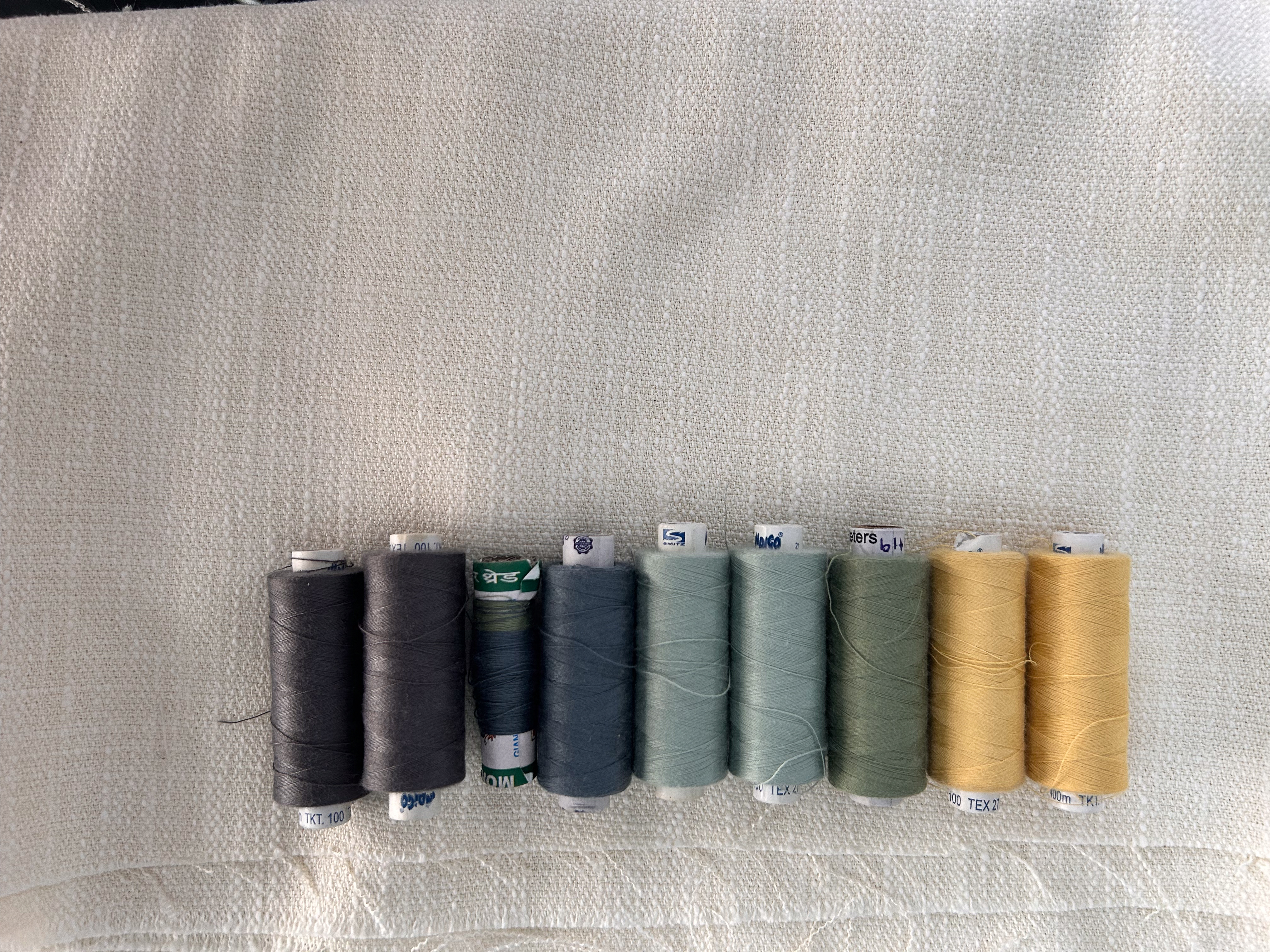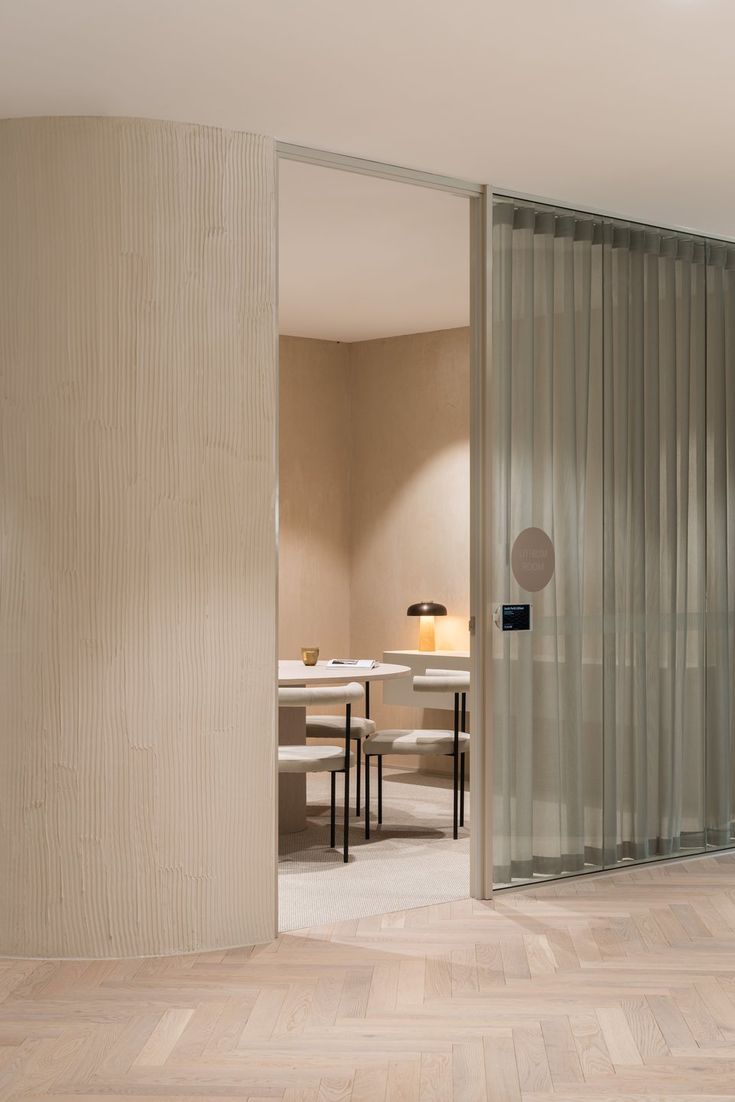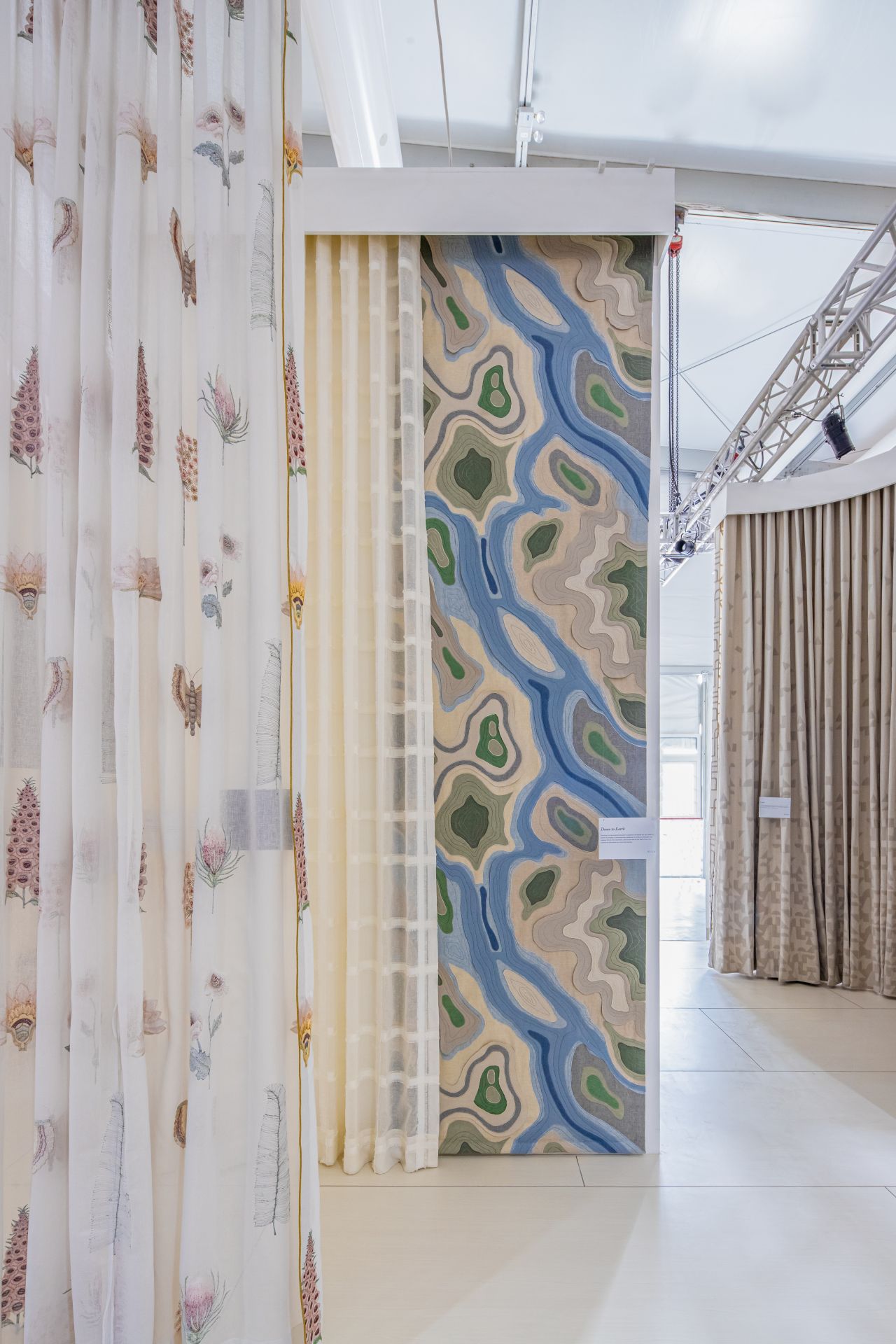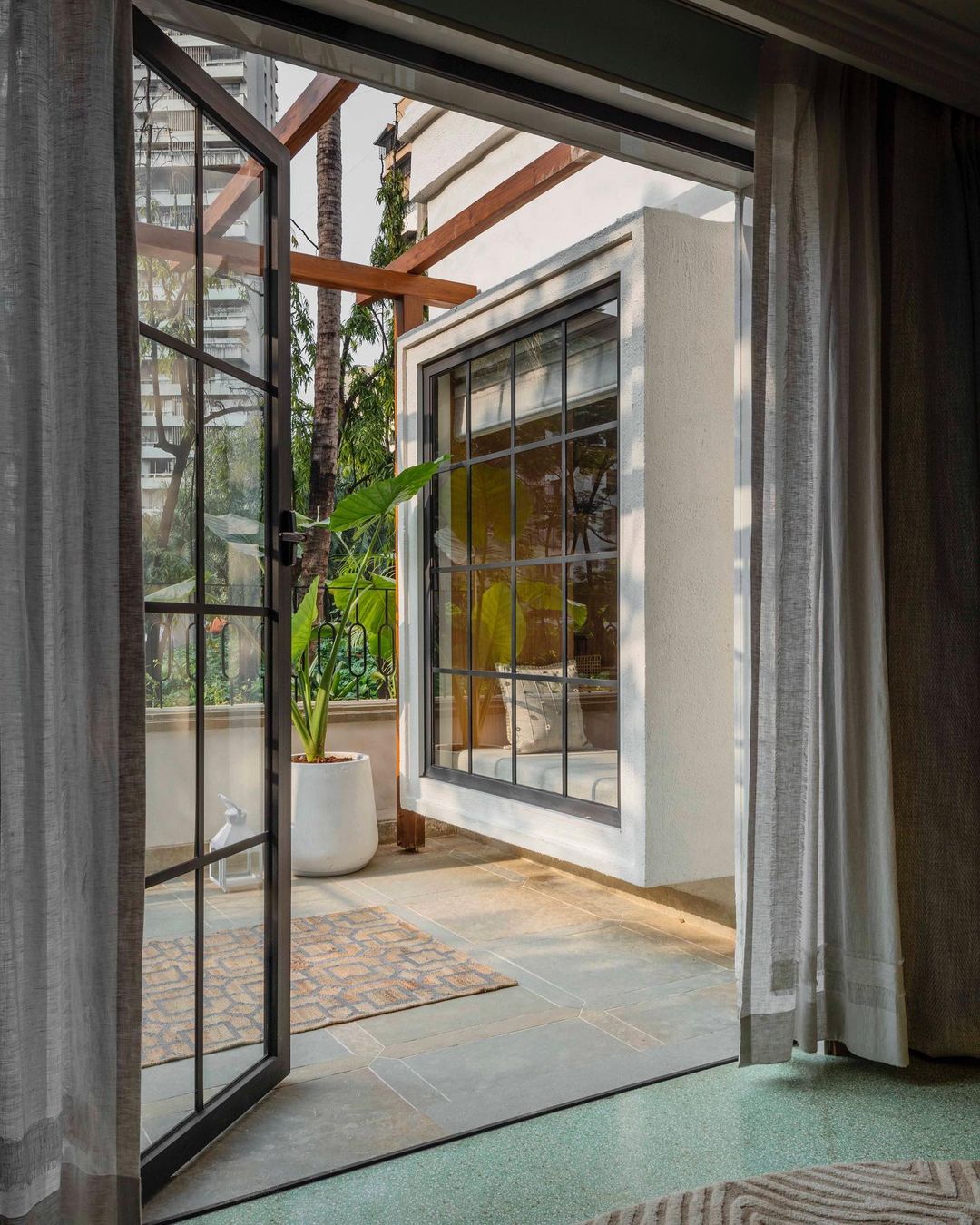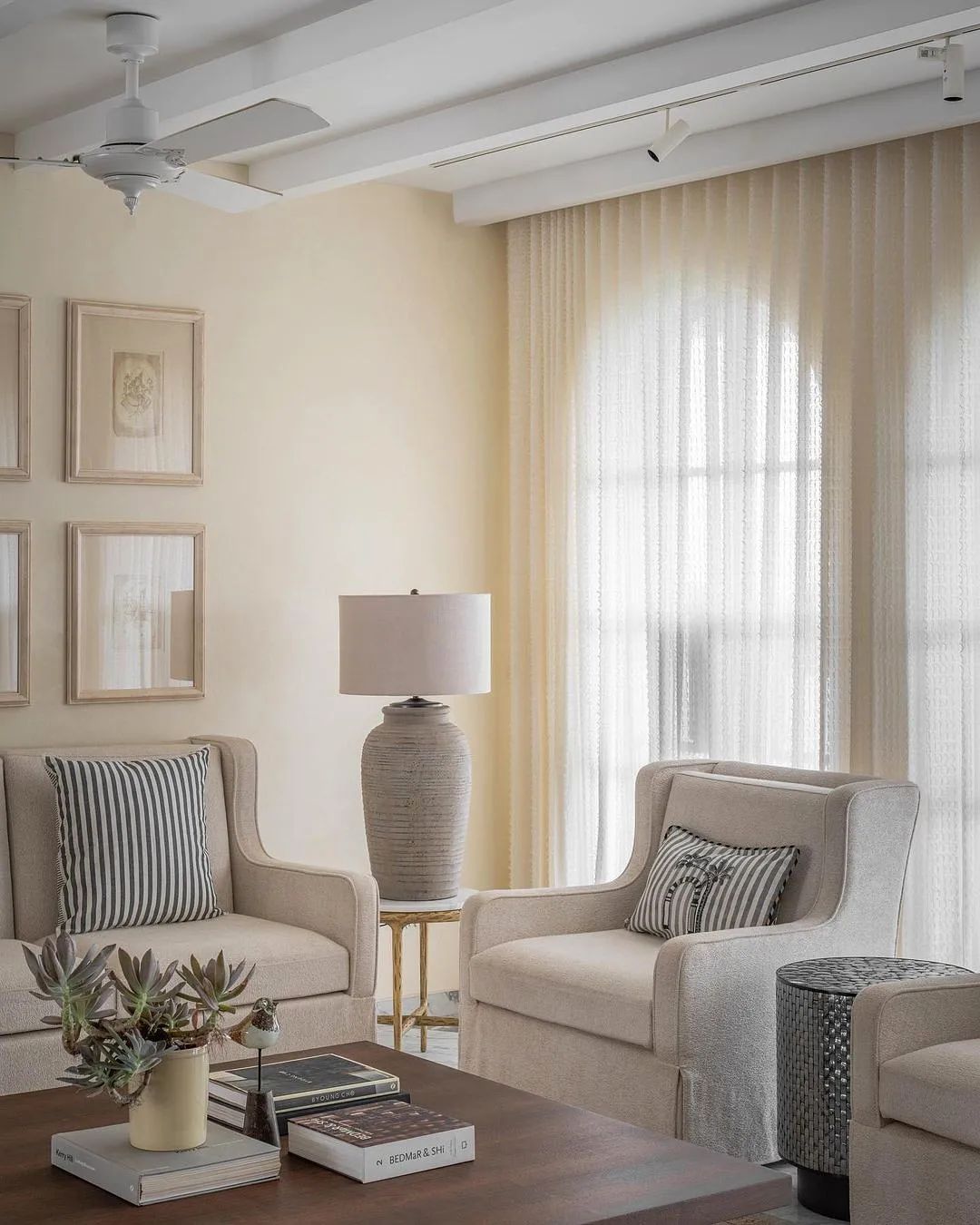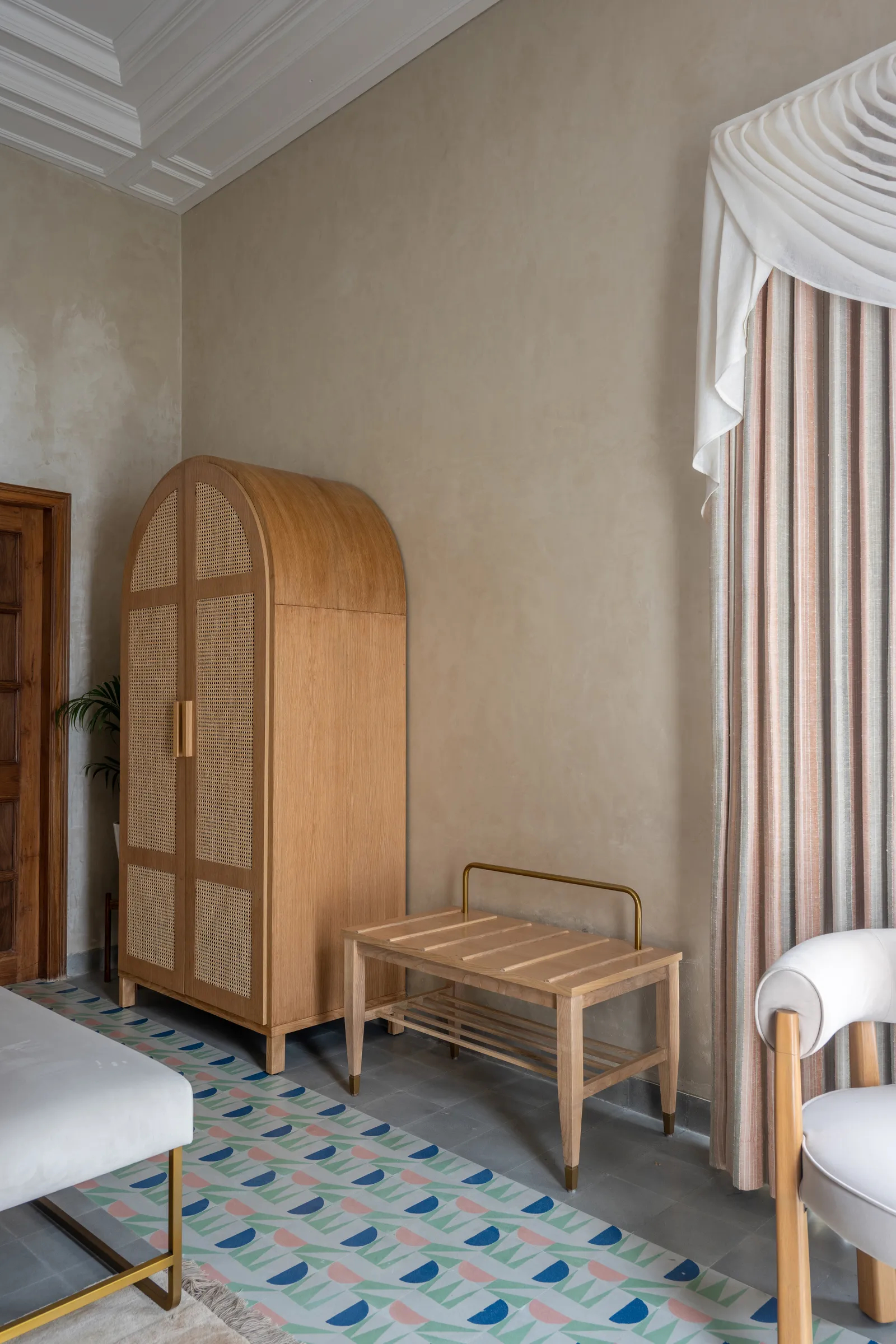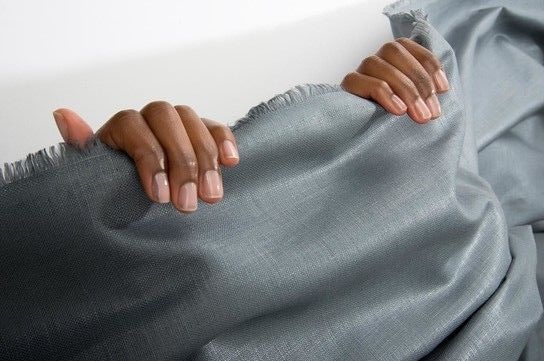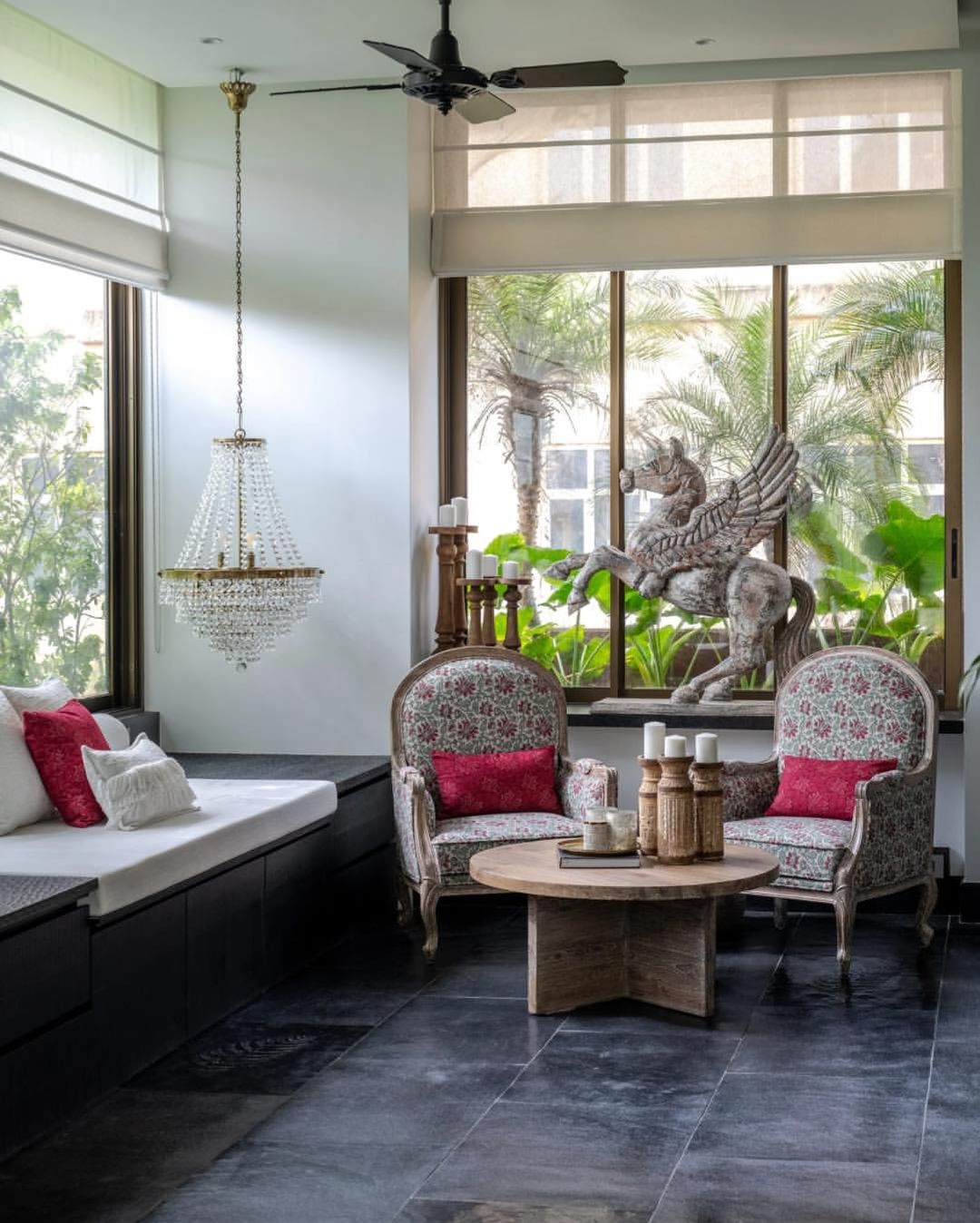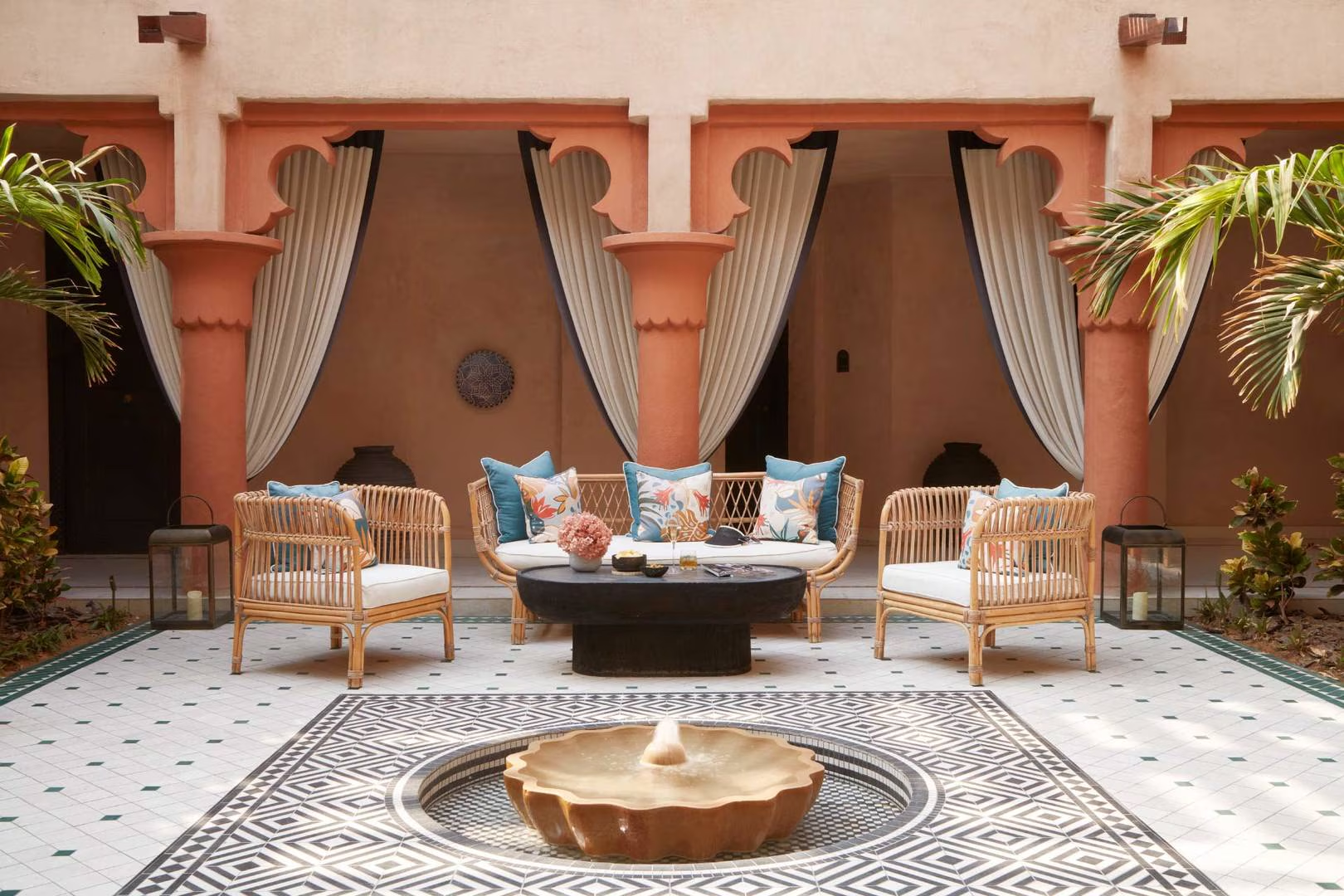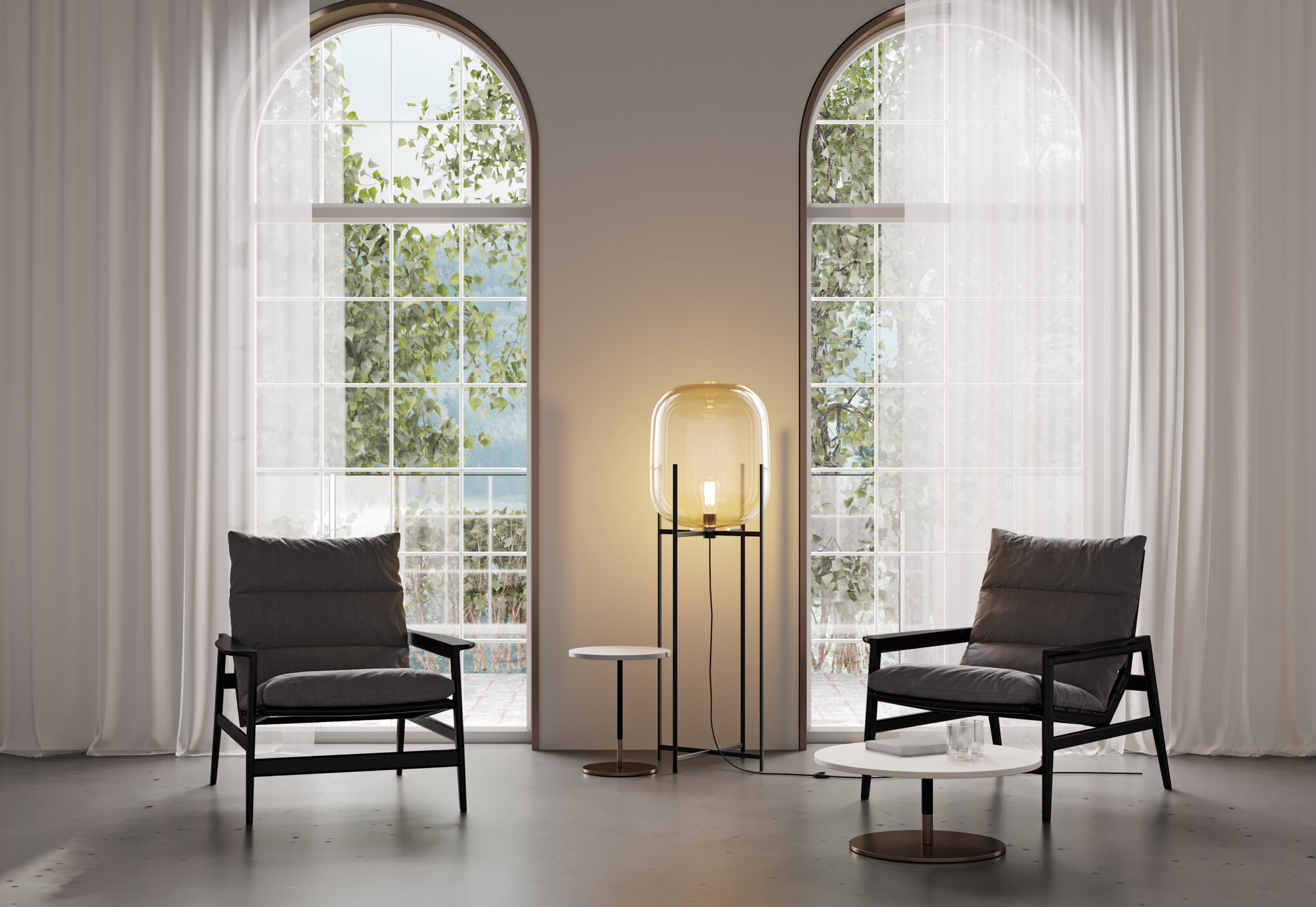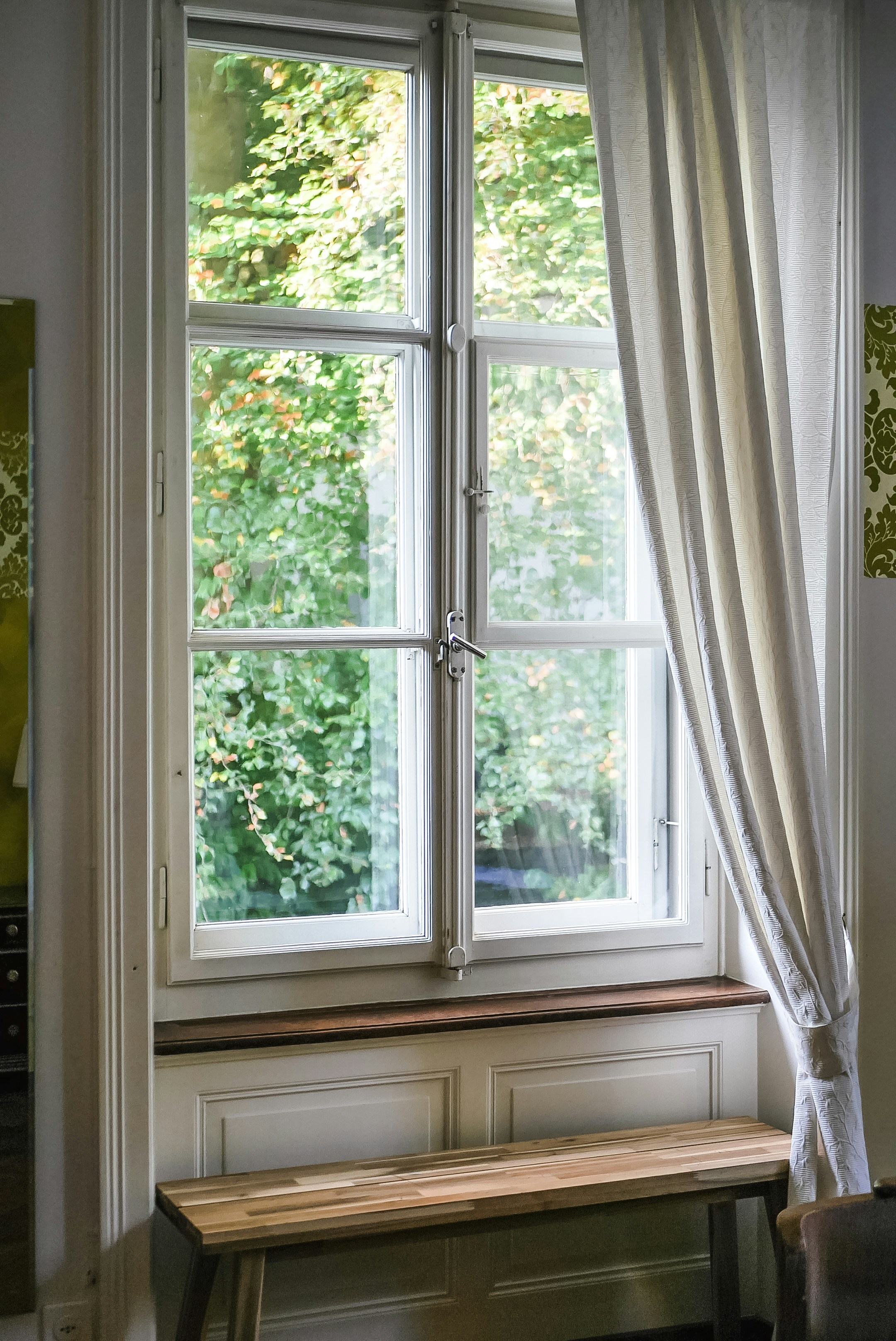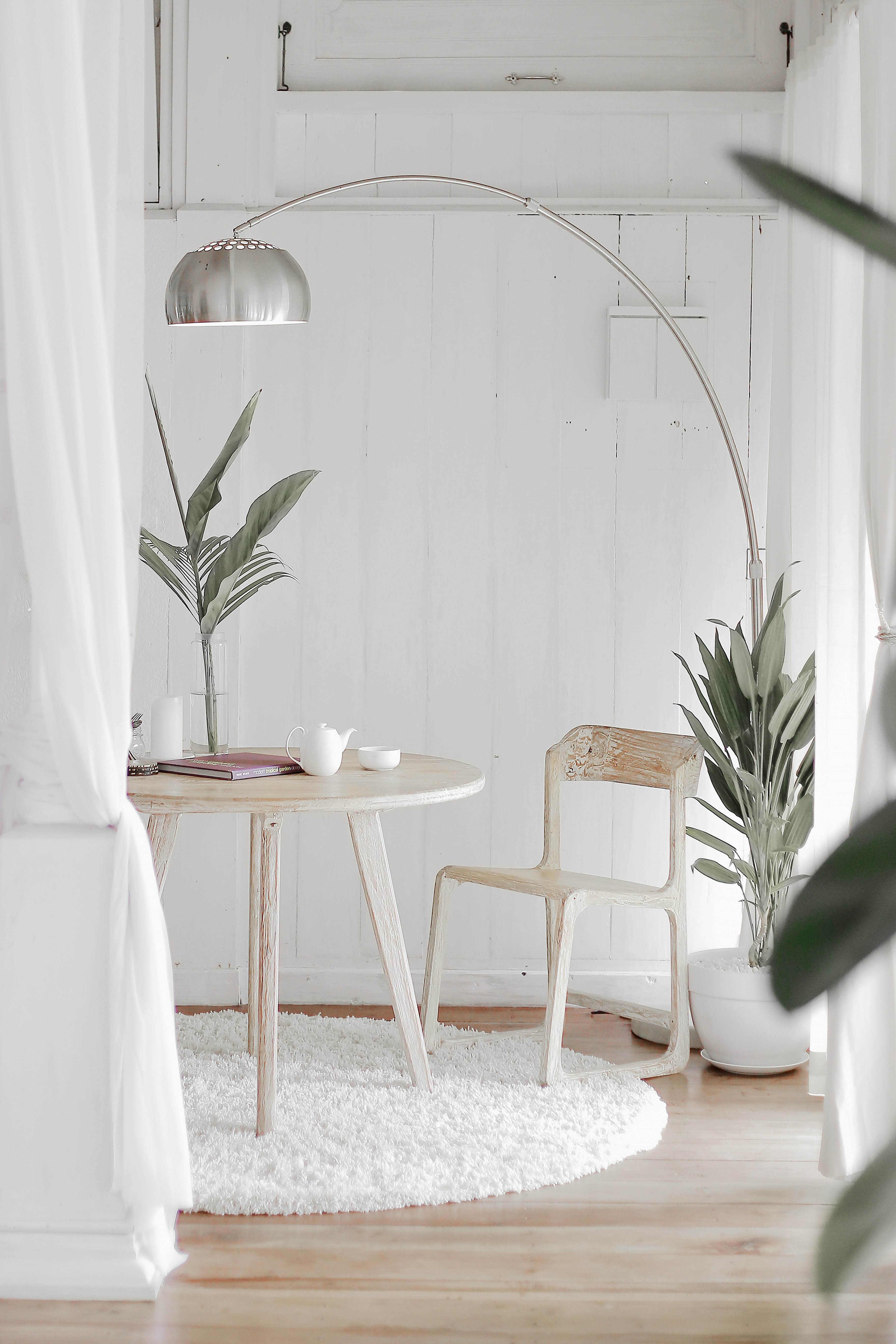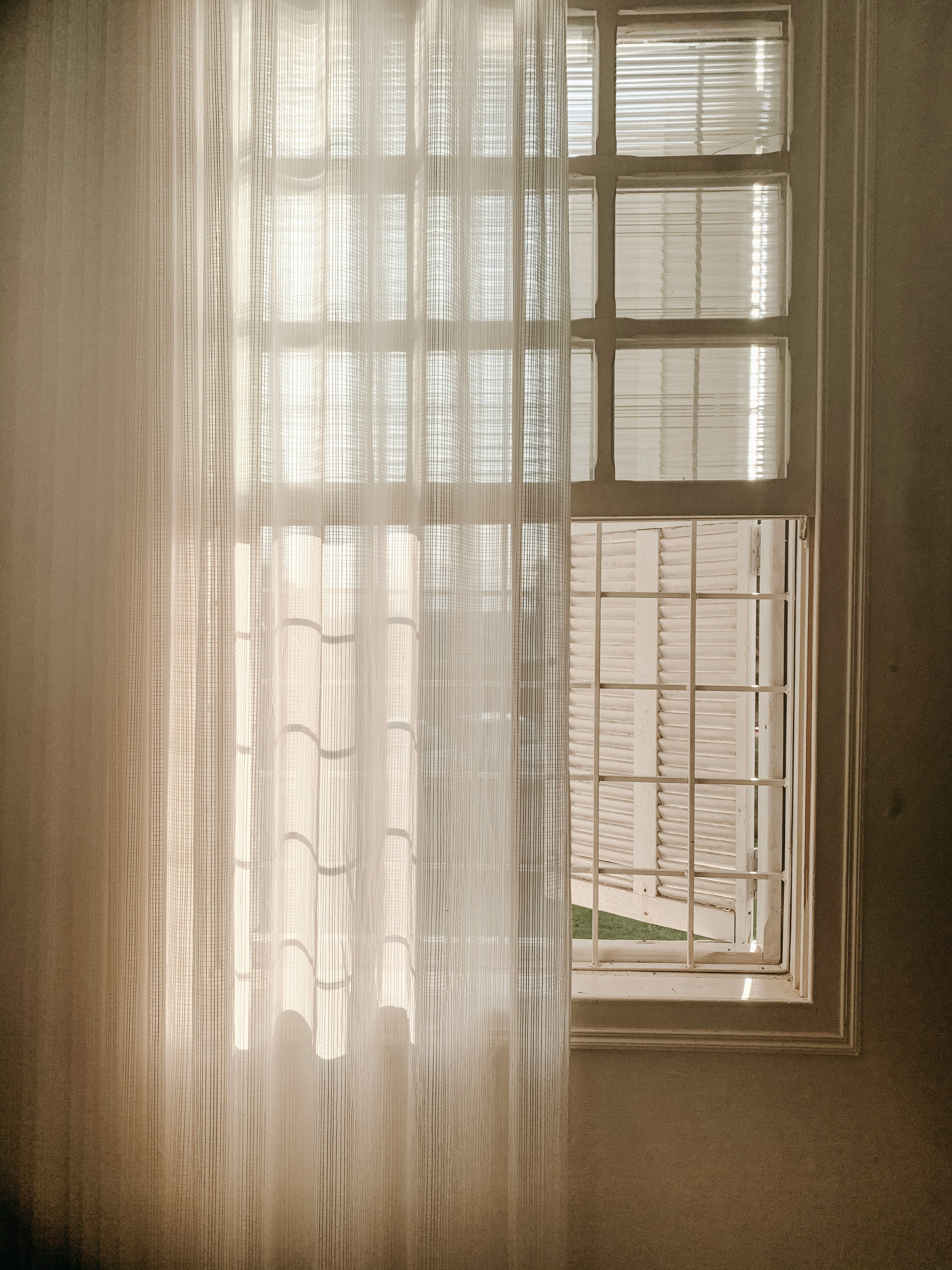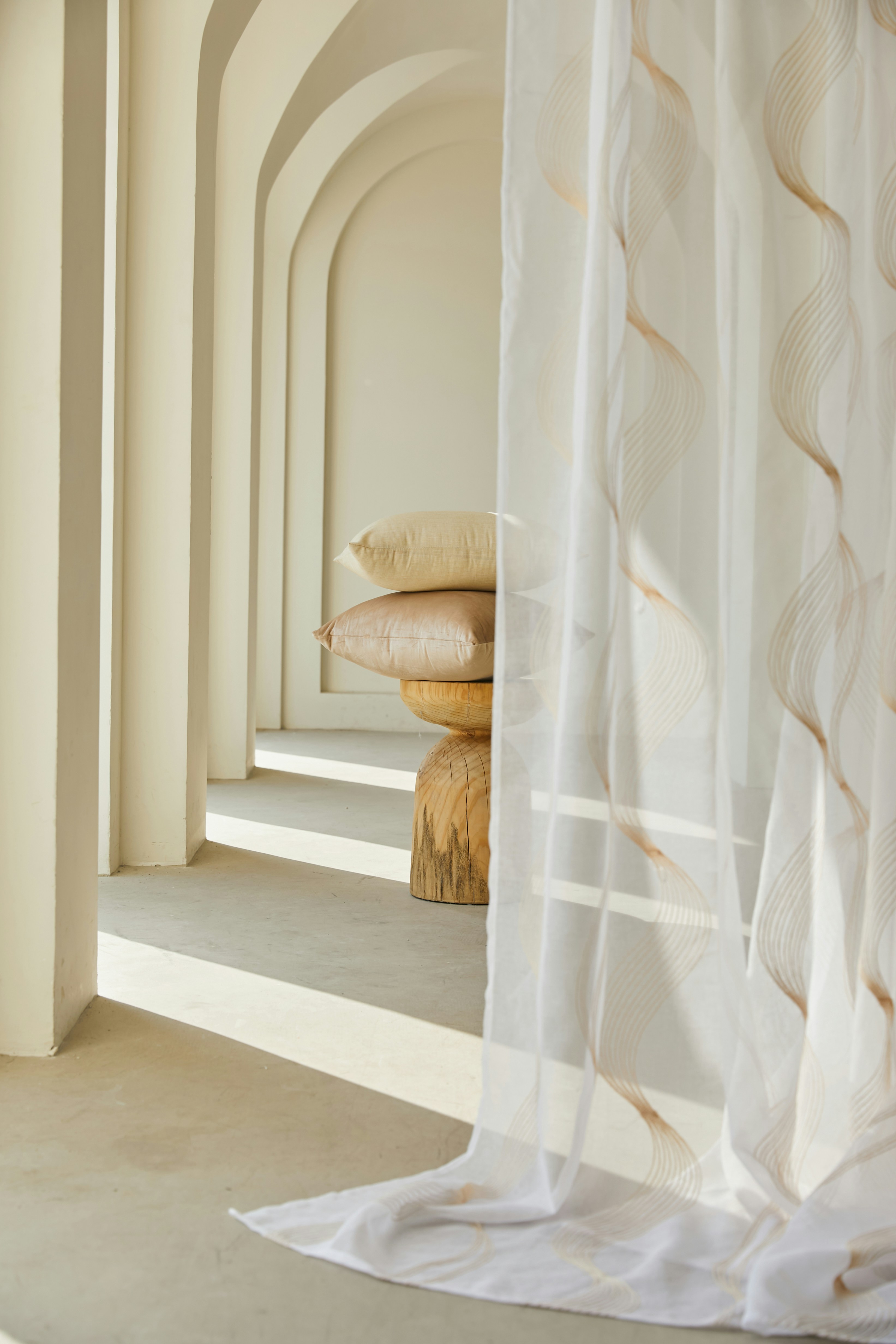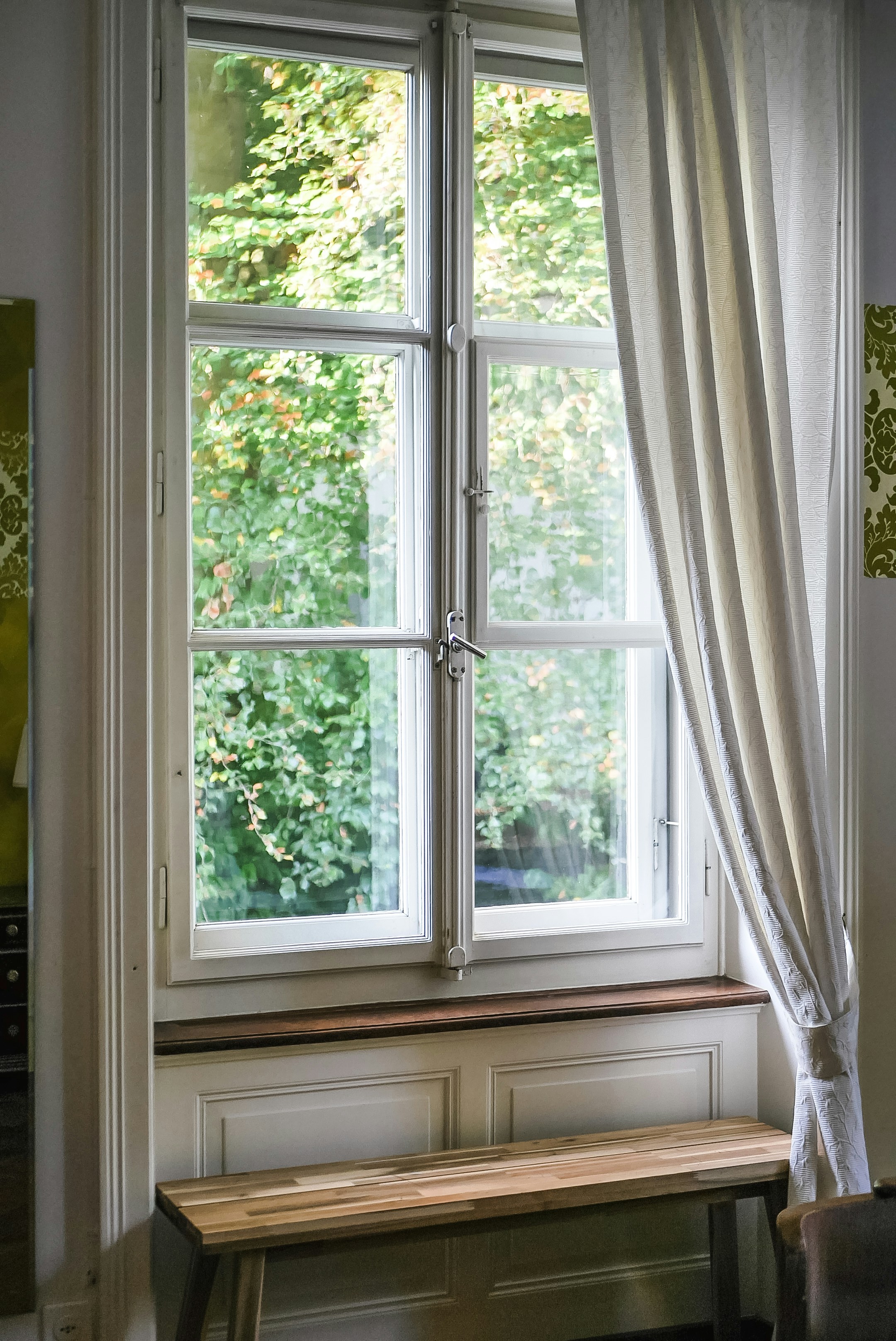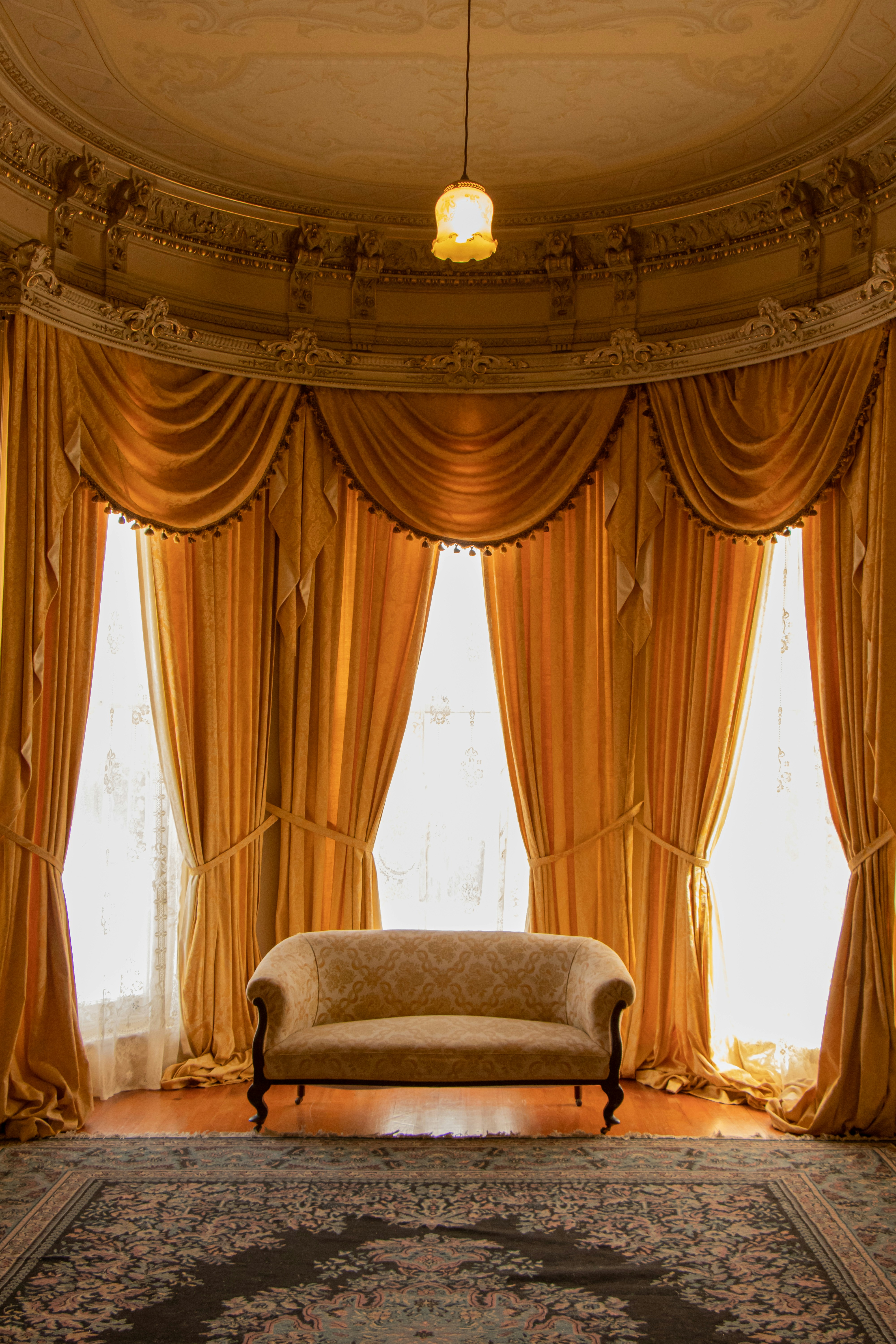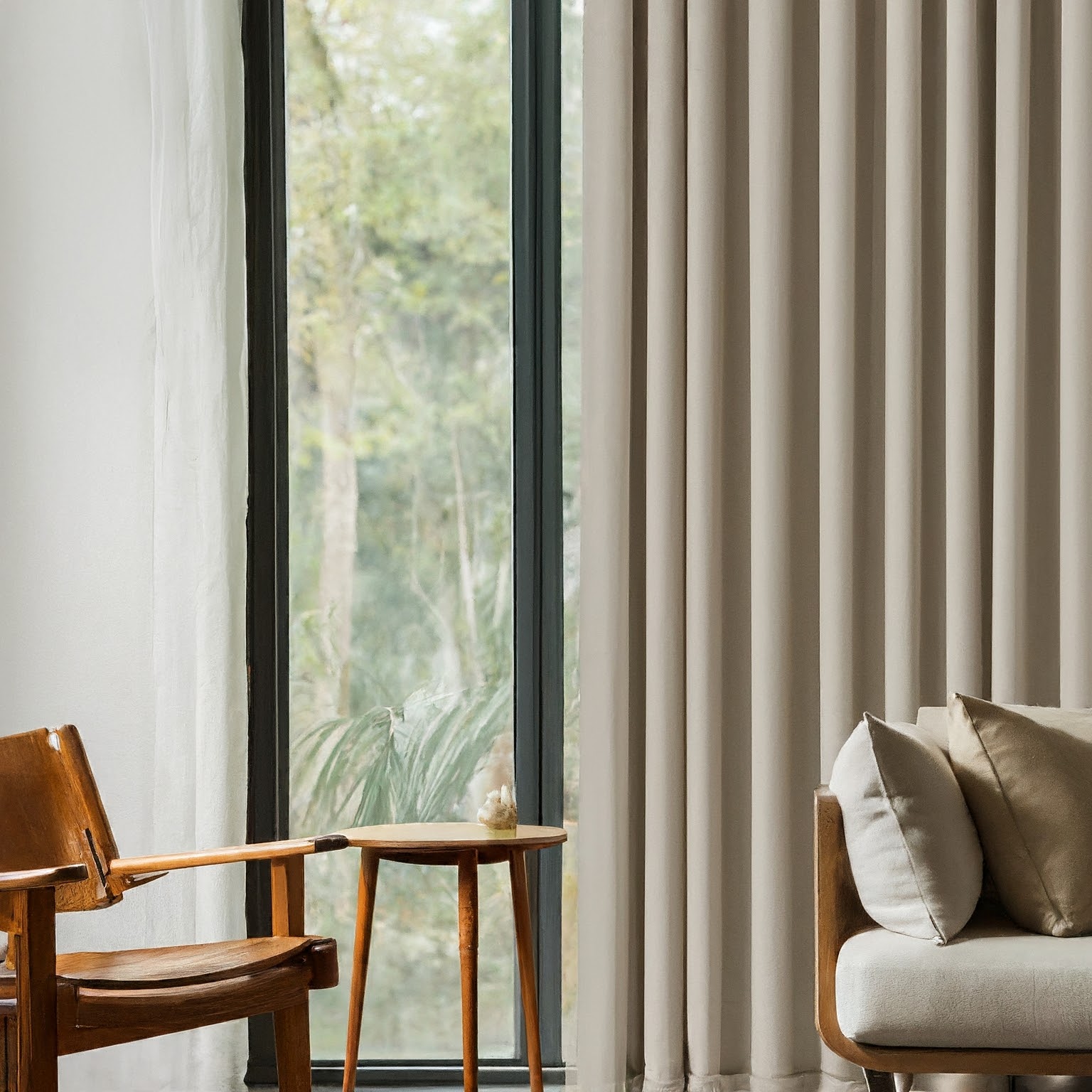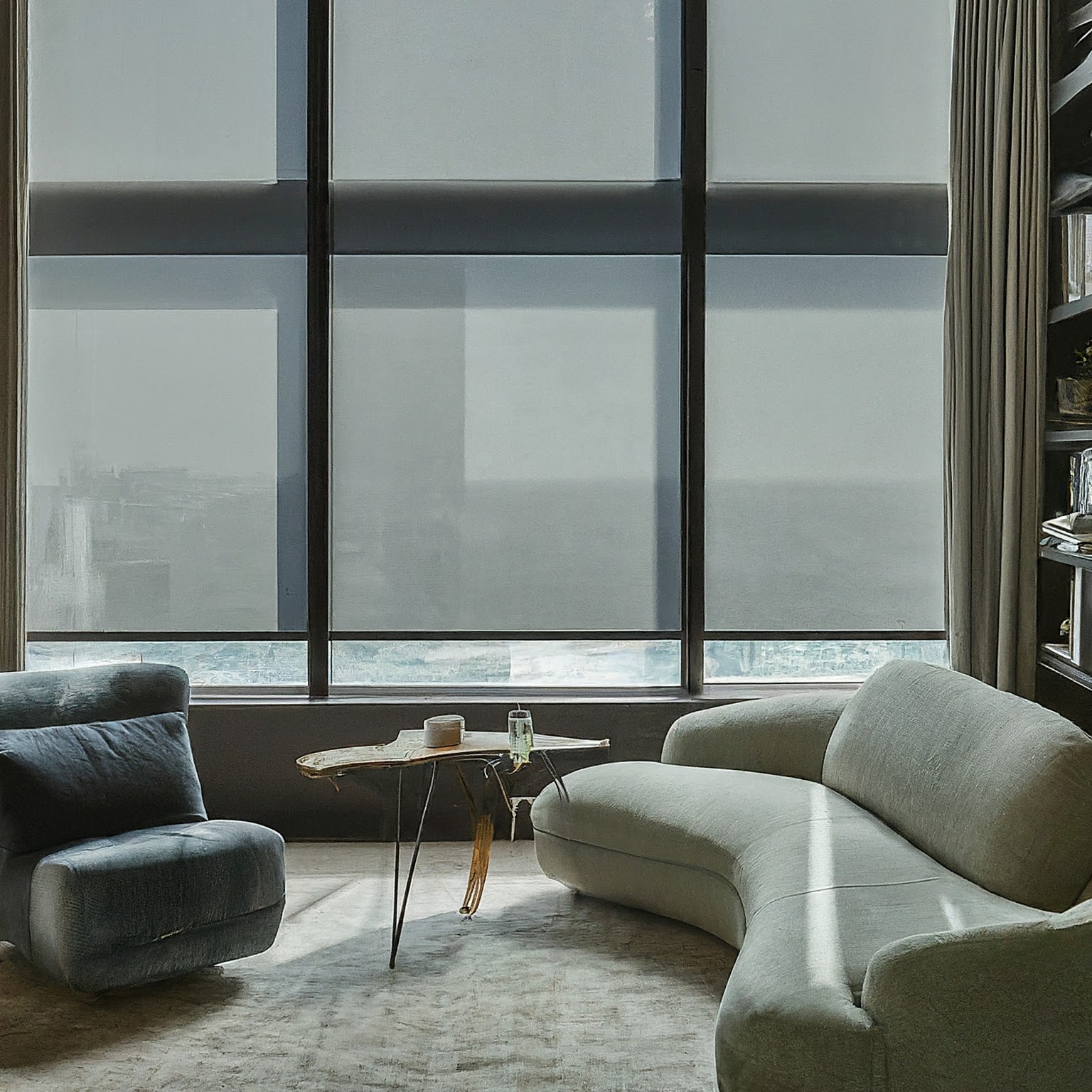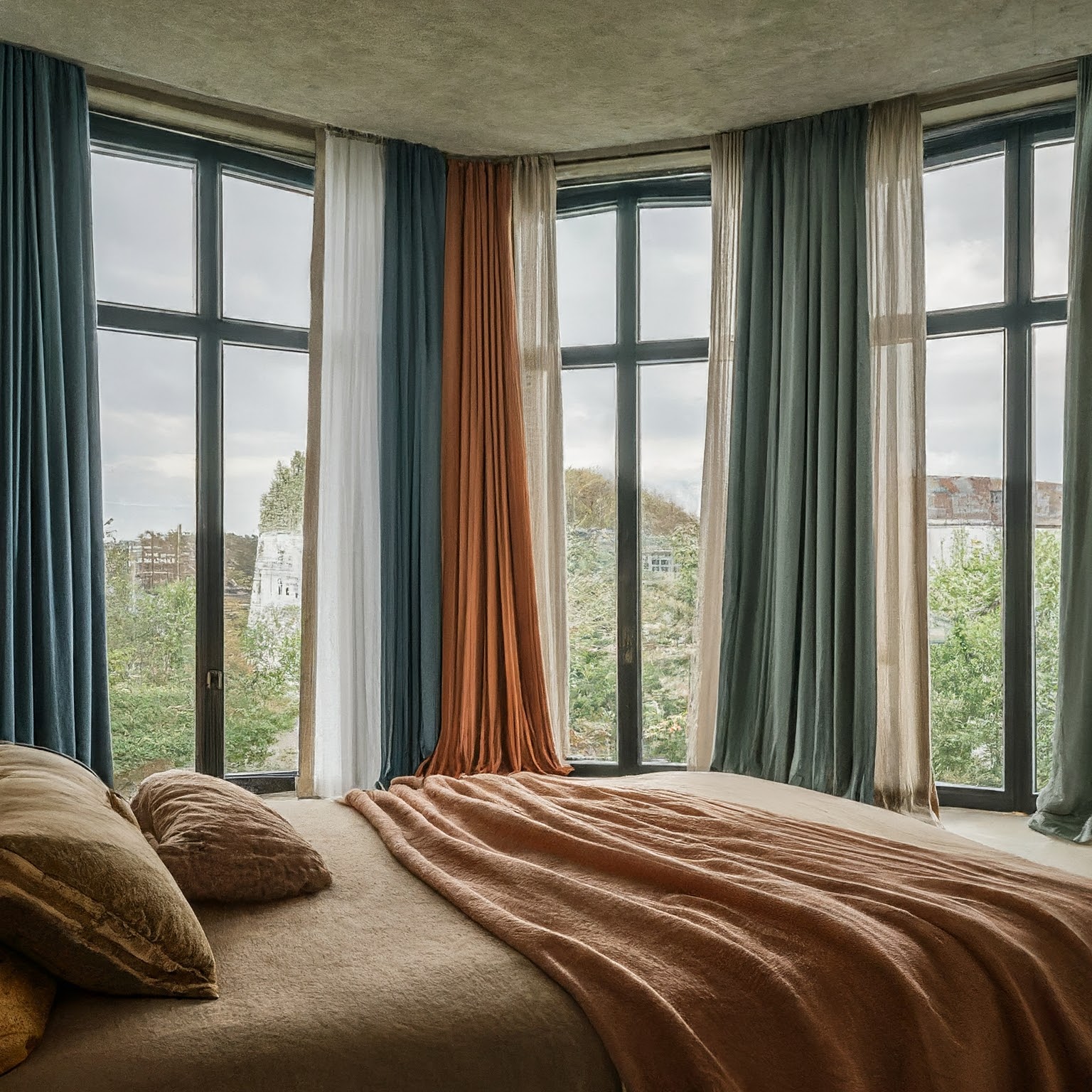Layering window treatments has become a popular trend in home decor. By combining different elements like curtains, blinds, and valances, you can create a custom window styling that provides both aesthetic appeal and functionality. The layered look also allows you to add visual interest and depth to your windows.
What are the Benefits of Layering Curtains?
- Enhanced style - Mixing and matching fabrics, textures, and colors allows endless possibilities for achieving your desired decor look, from elegant to casual. Layering creates a richer, fuller appearance.
- Light control - Blinds and curtains each offer light filtering abilities, so combining them provides flexibility for different times of day. Curtains can create darkness at night while blinds maintain privacy but allow some daytime light in.
- Insulation - With multiple layers, more air gets trapped, improving the windows' insulation ability and sound dampening. This helps reduce energy costs.
- A finished look - Layering finishes off the window for a more built-in custom aesthetic compared to a single treatment.
Layer Window Treatments Using Curtains
Curtains make an ideal first layer for window treatments ideas because they offer versatility, style, and softness. When layering window treatments, curtains should be used as the base or foundation.
There are several reasons why curtains work so well as the initial layer:
- Curtains come in a wide variety of fabrics, colors, and patterns to fit any decor. Choices like linen, velvet, cotton, or printed styles mean you can match your home's aesthetic.
- Curtain panels add a plush, elegant look and feel to a room. The draped fabric creates a softness that window blinds alone cannot achieve.
- Curtains allow for adjustable light control. You can leave them open, closed, or anywhere in between. This flexibility pairs nicely with additional window treatment layers.
- Floor-length curtains in heavier fabrics like velvet can help insulate windows in colder weather. Layered with other treatments, curtains create an energy-efficient barrier.
When selecting curtain fabrics and styles for layering, consider:
- Sheer fabrics if you want some light to filter through. Layer sheers behind opaque curtains.
- Linen or cotton for a casual, breezy look perfect for layering with blinds.
- Velvet, faux silk, or brocade curtains in heavier fabrics provide an elegant base layer that blocks light.
- Lighter, airy fabrics like voile or linen for areas where you still want sunlight.
The right curtain design and fabric set the foundation for successfully layering your window treatments. Hang them first, then add supplemental layers of sheers, shades, or blinds. With curtains as the base, you can create the perfect layered look.
Use Sheers Curtains for Adding Texture
Sheer curtains add a lightweight, airy layer that allows some light through while still providing a soft filter. They create visual depth and interest when combined with heavier window treatments.
There are several types of sheer curtains to consider:
- Voile sheers are made of lightweight, semi-transparent fabric often decorated with intricate patterns. They have a romantic, elegant look perfect for bedrooms or formal spaces.
- Organza sheers have a crisp finish and come in solids and prints. The stiffer fabric holds gathers and pleats beautifully. Organza diffuses light well while maintaining visibility.
- Polyester sheers are affordable and easy to care for. They come in a variety of weave patterns like lace and jacquard that add textural interest.
- Faux silk sheers capture the luxurious look of silk with added durability. They have a luminous quality and pair nicely with formal or casual decor.
Tips for Layering Sheer Curtains
- Hang sheers close to the window and put heavier curtains on a second rod farther inside the room. This creates an elegant framing effect.
- Choose sheers that are about 2/3 the length of your main curtains. The high-low look adds casual flair.
- Use decorative holdbacks and tie-tops to create soft swags and gathers with sheers. Avoid tightly pulling them back.
- Go for sheers in a lighter color than the room's main curtains to maintain an airy vibe. White or ivory pairs beautifully with bold colors.
- Install a privacy liner behind sheers in spaces where you need light filtering and visibility but also privacy.
Control Light & Privacy By Using Window Blinds
Adding blinds as a layer over your curtains allows for enhanced light and privacy control in a space. Blinds come in a variety of styles and can be customized to suit your specific needs.
Why Choose Window Blinds?
Blinds are ideal for regulating both natural and artificial light in a room. Unlike curtains, most blinds can be easily raised, lowered, and angled as needed to adjust the exact amount of light filtering into the space. Blinds also provide increased privacy over curtains, especially at night when indoor lights are on. Their slatted or layered construction allows you to control visibility from the outside.
Combining Curtains and Blinds
Curtains and blinds can be combined in creative ways to achieve the perfect balance of style, light control, and privacy for any room. Here are some of the primary techniques for successfully layering both window treatments:
- Hang curtains first to create a soft, elegant base layer. Add blinds on top of or behind the curtains depending on the look you want to achieve.
- For a coordinated look, select curtain and blind fabrics in complementary colors and patterns. Mix textures like sleek faux wood blinds with breezy linen curtains.
- Blinds can be fully or partially concealed behind curtains to control light and privacy while still showcasing the curtains as the focal point. Open the curtains wide to reveal the blinds.
- For full light blockage, install blackout-lined curtains and opaque blinds in dark hues. Close both fully when darkness is desired.
- If adding an extra privacy layer, place blinds closest to the window, behind lightweight, semi-sheer curtains. The curtains will still allow some daylight in while the blinds provide discretion.
- For windows without a valance, hang curtains and blinds at the same height to create a clean, seamless line. Or, install the blinds higher than the curtains for more flexibility in operation.
- Let functional blinds take center stage by mounting curtains on short decorator rods just below or above the window frame as more of an accent.
Get creative with mixing and matching different curtain and blind styles to control light and privacy while also personalizing your space. Layering allows you to feature your preferred aesthetic as well as customize how much light enters the room.
Valances to Add Depth in Home Decoration
Valances add a decorative element while also serving functional purposes. Installed above curtains or shades, valances can help anchor the window treatment, provide a polished finished look, and hide hardware or lighting. Valances come in a variety of styles that can complement any decor.
Essential Use and Styles of Valances
Valances come in different shapes and sizes to achieve certain decorative effects. Standard valances are mounted above the window frame and curtain rod, providing a horizontal band of fabric at the top of the window. Cloud or balloon valances feature more volume of fabric and can cascade over the top of curtains. Cascading or jabot valances feature fabric hanging down to provide fullness at the sides. Tailored or shaped valances follow the lines of the window frame and can add architectural interest. You can also find style options like ruffled, swag, or tiered valances for even more dimension. The style you choose depends on the overall look you want to achieve.
Best Places and Methods for Installing Valances
Determine the desired placement based on the height of your window and existing hardware. Inside or ceiling mounts place the valance on the window casing itself, while outside mounts attach it to the wall or ceiling above the window. For proper alignment, make sure to measure correctly and install the valance hardware level and even across all windows. The valance can be attached using screws, adhesive strips, or decorative holdbacks on the sides.
Coordinating Fabrics and Patterns
Choose a valance fabric that complements your curtains and walls. Matching the same print or solid provides cohesion. Contrasting prints in the same color scheme also work well. To make the window feel taller, select a vertical stripe pattern. For a wider and more expansive look, use horizontal stripe fabrics. It's best to avoid mixing too many colors, textures, and fabric patterns in one window treatment. Unify everything with color and include accents of other patterns.
Adding the Perfect Finishing Touch for Valances
Adding final accents and accessories provides the polished, designer touch when layering window treatments. Small details make a big difference in pulling the whole layered look together seamlessly.
Tiebacks for Layering Curtains
Tiebacks add both function and visual interest when layering curtains with blinds. Choose tiebacks that complement the style of the curtains and hardware. For a casual farmhouse or cottage look, textured tiebacks made of rope, burlap, or wood beads are an excellent choice. For a more elegant style, polished metallic or crystal tiebacks work well. Position the tiebacks high and wide to keep the curtains fully open and nicely framed when you want the window unobstructed.
Trims and Tassels for Layering Curtains
Add trims, tassels, or fringe along the bottom edge or side panels of the curtains to further enhance the layered look. This is an easy way to incorporate color and texture to tie the layers together. For example, you could add beaded fringe to the hem of linen curtains to coordinate with wooden beaded blinds layered behind. Pom pom or brush fringes are other fun options.
Toppers and Swags for Curtains
Top treatments like swags, cascades, or jabots act as miniature valances framing the tops of the window. These elegant accents can harmonize all the layers into one cohesive window dressing. A softly gathered swag overlaying the valance and top portion of the curtains pulls colors and patterns together. Cascades or jabots layered over the curtains add a soft ruffled effect.
Well-Coordinated Layers for Curtains
When it comes to successful layering, the devil is in the details. Take time to coordinate all the materials, colors, textures, patterns, and hardware finishes. The curtain panels, valance, sheers, blinds, and accents should work cohesively. Mix and match, but ensure there is always something relating the layers. The final result will be a designer-inspired window treatment beautiful from every angle.
Curtains and Blinds for Light & Privacy Solutions
Controlling light and privacy are two of the main reasons people use window treatments. The right combination of curtains and blinds can help you achieve your ideal lighting and visibility.
Curtains for Balancing Natural Light
Natural light is appealing, but too much direct sunlight can cause glare and fading. To filter the light, use sheer curtains made from lightweight materials like linen or polyester. For rooms you want to darken, choose lined curtains in heavier opaque fabrics like velvet. Blinds also modulate sunlight - aluminum blinds direct light up to provide ambient lighting, while horizontal blinds tilt to control the amount entering the room.
Managing Visibility Using Sheer Curtains
Sheer curtains allow light in but obstruct views. For privacy, lined curtains in thick fabrics completely block sight lines. Alternatively, blinds tilt shut to prevent visibility from outside. For total blackout, use opaque curtain panels and fully closed blinds. In rooms facing the street, curtains offer discretion at night when illuminated from within.
Solving Brightness Issue With Window Blinds
If your room is too dim, swap sheer curtains for lighter materials or add blinds for direct lighting. For excessive brightness, choose thicker lined curtains and close the blinds. To reduce visibility, overlap curtain panels and install blinds with smaller slats. Keep adjustments in mind throughout the day as sunlight changes. The right window treatments make it easy to modulate lighting and visibility.
Budget-Friendly Options For Layered Window Treatment
Getting the layered window treatment look doesn't have to break the bank. With some clever tricks and affordable materials, you can achieve a luxe look on a budget.
Affordable Fabrics For Curtains
1. Opt for lower-cost natural fiber fabrics like cotton and linen rather than silk or velvet. With the right textures and patterns, cotton can look just as elegant as pricier fabrics.
2. Check fabric stores for discounted remnants that you can use for shorter curtain panels or valances. Sometimes you can get high-end fabrics for a fraction of the normal cost.
3. White or off-white linens can act as an inexpensive base layer that you can build on with other accent fabrics.
4. For sheers, nylon or polyester blends are far less expensive than silk. Go for textured fabrics like voile to add visual interest.
Layer Curtains to Improve Home Appeal At Minimum Expense
- Layer solid-colored sheers behind printed curtains to create the illusion of having more expensive textiles.
- Hang curtains wide and high to give the appearance of larger curtain panels without having to sew as much fabric.
- Swap out just the valence seasonally to refresh the look without replacing all curtains.
With a little ingenuity, you can achieve a layered window treatment look that appears luxurious but fits your budget. Get creative with materials and don't be afraid to DIY!
The key benefits to remember are:
- Layering provides texture and depth to your décor. Sheers and valances layered over curtains create visual interest.
- Mixing different materials and textures allows creativity and personalization. Choose materials like linen, cotton, faux silk in a variety of textures.
- Adjustable privacy and light control. Blinds layered behind curtains give options for privacy and light as needed.
- Softens harsh light. Sheers filter and diffuse sunlight beautifully.
- Energy efficiency. Insulated curtains with tightly woven fabrics help reduce heat/cold transfer.
- Noise reduction. Layering dense curtains over blinds helps absorb sound.
- Enhances architecture. Framing windows with proper treatments enhances their beauty.
Enhance Your Space With Layered Window Treatments
As you design your layered window treatments, focus on your needs and style. Layer by room purpose and exposure. Bedrooms may need blackout layers, while living rooms need light. South-facing windows need heat protection.
The options are endless, so explore fabrics and styles until you find your perfect combination of layers. Well-designed window treatments can transform the look and feel of a room.

